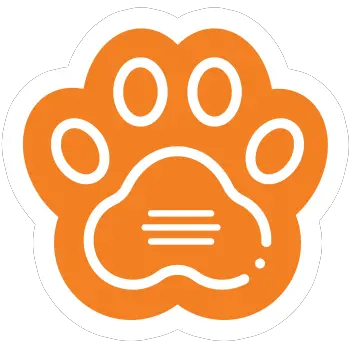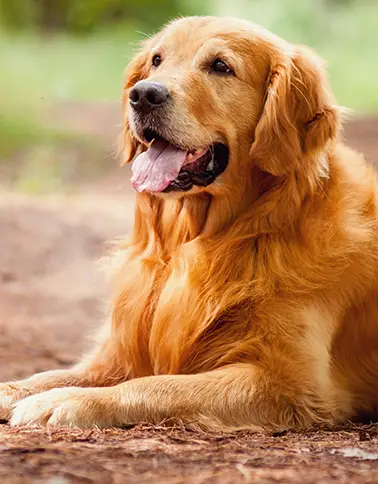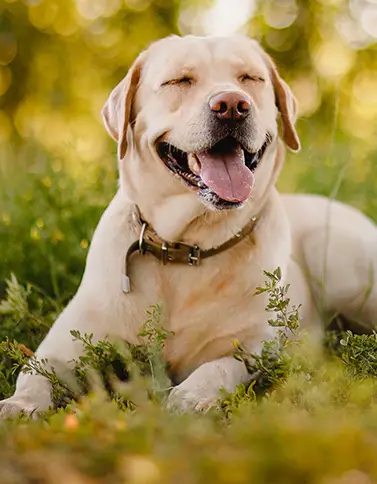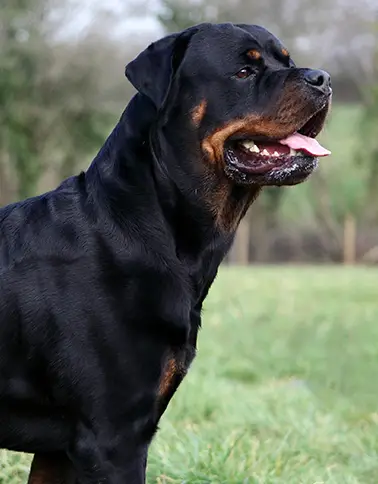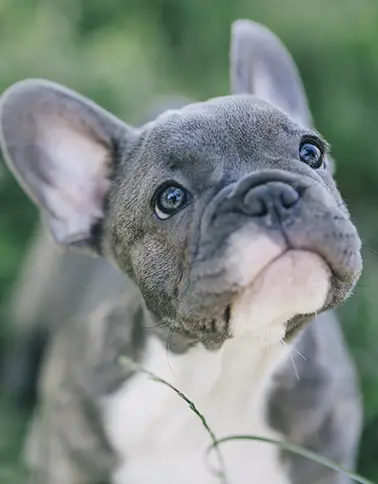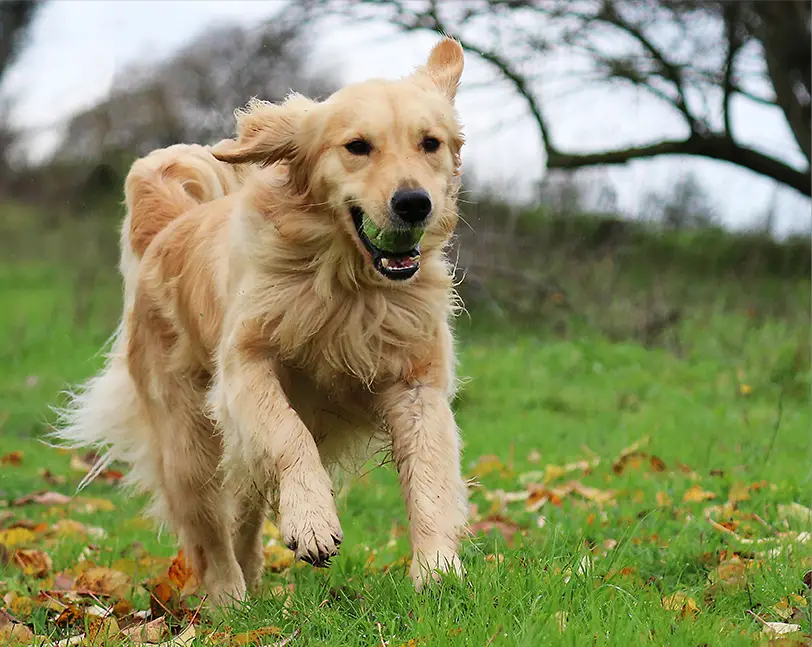the most popular dog breeds in the world
Dogs have always been the closest human friend right from the early centuries. They are one of the most loyal, trustworthy, and gentle domesticated animals on the planet. Every day, we see evidence that dogs are not just man's greatest friend, but also a companion that devotes themselves and their existence to us humans, loving us even without any form of expectations from us in return.
In addition, dogs can ease loneliness, reduce stress, depression, and anxiety, encourage playfulness and exercise, and even enhance your cardiovascular health. They are also known to offer valuable companionship for older individuals.
There are different types of dog breeds known today. However, only about 360 breeds are currently recognized worldwide. Their breeds are categorized based on their features, appearance, body size and workability.
Different dog breeds have varying levels of capability for performing specific tasks. Nevertheless, a significant percentage of people brought dogs to their homes due to their loyal, friendly companion nature and protectiveness toward their potential owners.
Although there are many dog breeds in the world, only a few are more popular among people. So, today, we are going to discuss the top five most popular dog breeds in the world.
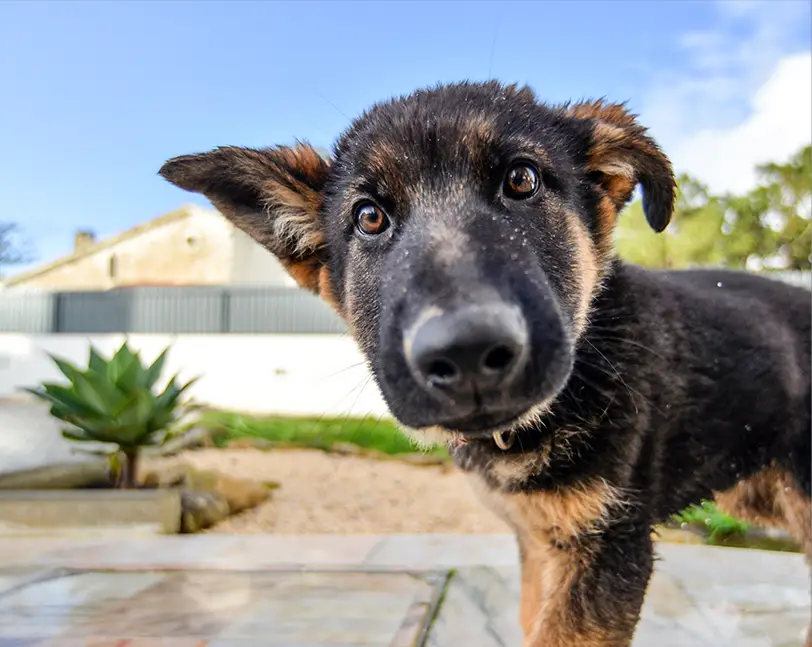
OUR METHODOLOGY
Before now, determining the most popular dog breeds in the world would have required extensive (and nearly impossible) research. And besides, not all countries, like the American Kennel Club, publish registration statistics.
So, we sought a method to analyze the top five most popular dog breeds in the entire world instead of limiting ourselves to just the U.S. As a result, we looked up current dog breed registration statistics of 96 different countries' Kennel clubs. These countries cover the regions of America, Europe, Asia, and Africa.
At the same time, we also turned to Google – Google Trends to source similar data of the remaining countries that we could not obtain due to the absence of recognized Kennel clubs in such countries. As you may be aware, Google Trends enables you to compare the popularity of different search terms. In our instance, we were able to determine which dog breed is the most sought after – and thus the most popular in the remaining 99 countries based on this criteria.
Our research covered the most recent registration numbers from Kennel clubs in these 96 countries, as well as Google searches conducted between July 1st and July 30th, 2021. For each breed, we included a few extra data, such as its characteristics, origin, height, weight, life expectancy, and so on.
So, what are the top five most popular dog breeds in the world?
Basen on our research methodology, below are the current top five most popular dog breeds in the world:
We all have our preferred dog breeds as dog lovers. Sometimes, our preferences are usually influenced by our upbringing or previous experiences with specific dogs. For instance, some of us may have fond memories of the Golden Retriever or German Shepherd we had as a child, or we may have spent our adulthood with. In a nutshell, we've all realized how much our canine companions can improve our lives.
There are numerous unknown dog breeds out there, but certain breeds simply soar to the top more than others. The five dog breeds on this list are so well-known that nearly everyone has seen them, heard of them, or knows someone who owns one. In fact, if you ask a random person to visualize a dog in their head, it's likely to be one of these breeds.
However, if you're considering getting a dog, there are many factors and options to evaluate. In fact, there is a dog for everyone, and many of them are looking for a loving home to call their own.
The top 5 most popular dog breeds in detail.
You can find the world's most popular dog breeds at dog shows, homes and families. So, when it comes to the most popular dog breeds in the U.S., do you instantly think of a Labrador Retriever? You're absolutely correct. But what about the most popular dog breeds in Argentina, Belgium, France, or even the U.K.? Every country has its own pet preferences, and while a country's dogs are as diversified as its population, some breeds are more popular than others.
So, below are the detailed rundown of the top five most popular dog breeds in the world.
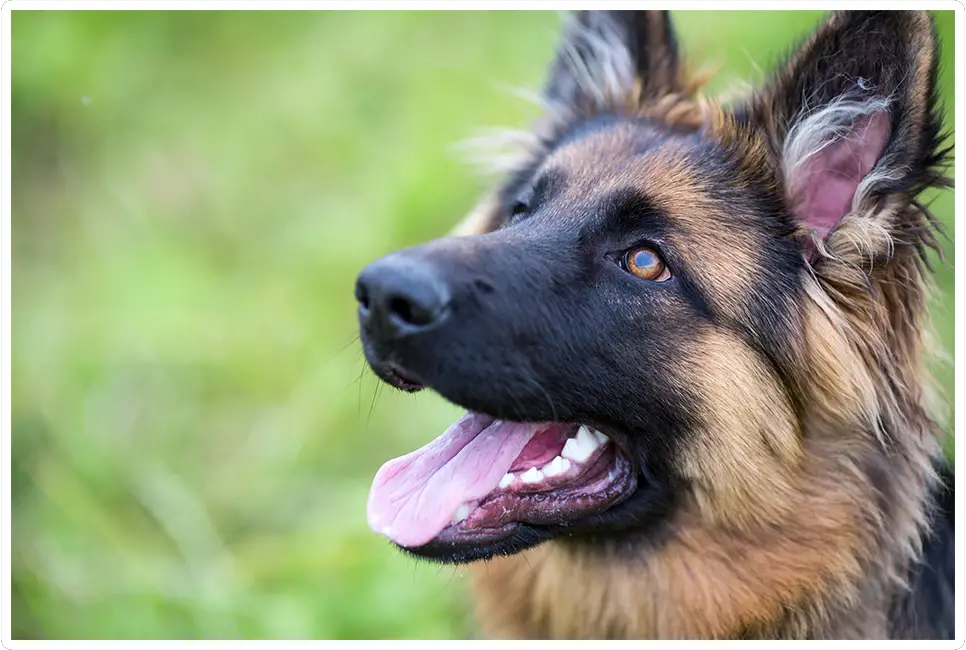
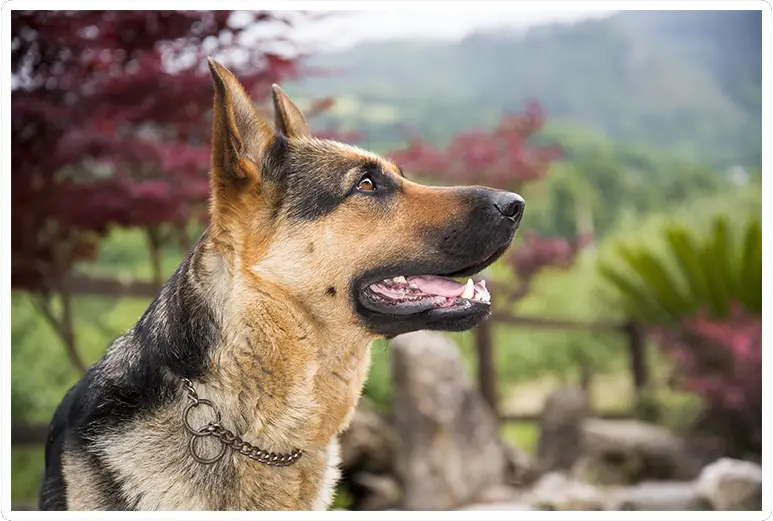
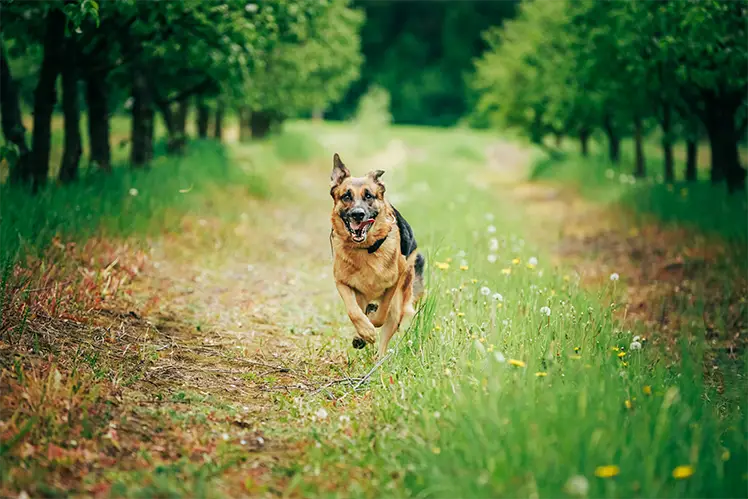
The ever-faithful German Shepherd dog regularly finds itself at the top of the most popular dog breeds not only in America but also in the world, and it is easy to see why. Thanks to their calm, confident nature, these guardian dogs are eager to please and fast to learn.
According to the Fédération Cynologique Internationale (FCI), the English name of this breed is German Shepherd Dog. In the United Kingdom, the breed was officially recognized as the "Alsatian Wolf Dog" from after the First World War until 1977, when it was renamed the German Shepherd. Although the German Shepherd has the look of a wolf, it is a pretty modern dog breed to be desired. This breed of dog is capable and intelligent. Its loyalty and bravery are unrivalled, and it is incredibly adaptable. German Shepherds, regardless of their purebred pedigree, can be found at shelters and breed-specific rescues. In addition, they are pretty active and enjoy having a job to do. As a result, they require enough daily exercise to avoid becoming naughty or high-strung.
German Shepherds are herding canines that were initially developed to herd sheep. Since then, they have been the favored breed for a variety of works, such as disability assistance, police and military roles, search-and-rescue, and acting, due to their strength, trainability, obedience, and intelligence demeanors.
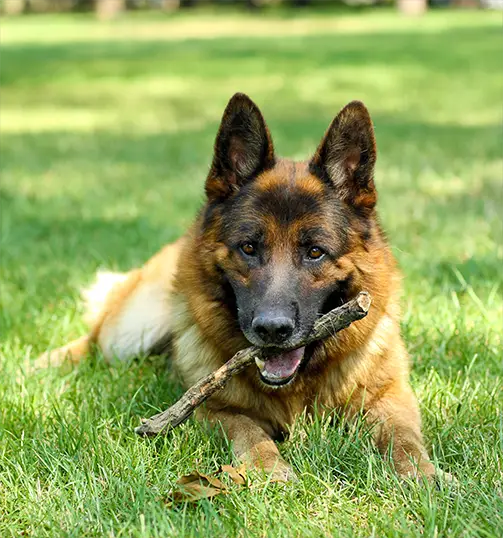
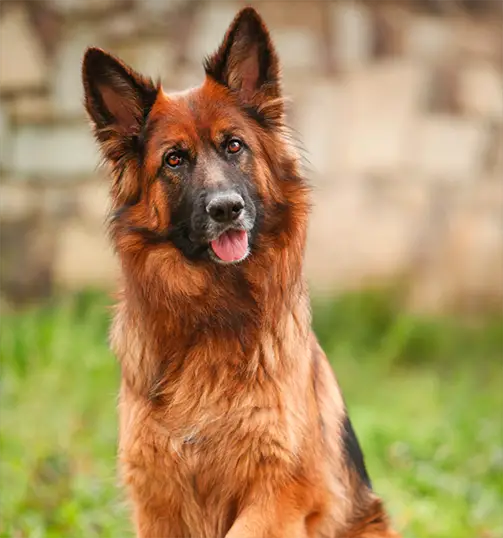
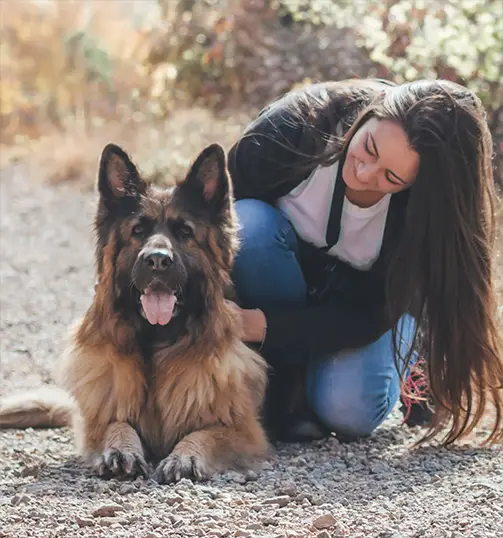
German Shepherd dogs are medium to large in size, with a standard height of 24-26 inches for males and 22-24 inches for females at the withers. They are longer than their height, with an ideal length-to-height ratio of 10 to 8 1⁄2.
They have a long square-cut muzzle, a domed forehead, powerful jaws, and a black nose. Their eyes are brown and medium in size, while the ears are broad and stand upright, open at the front, and parallel, but they are usually pulled back while in motion. However, the AKC set no official standard when it comes to the weight range of this breed.
A German Shepherd dog typically has a long neck that is lowered when moving at a fast pace and when stalking and elevated when it is exciting. In addition, they have a bushy tail that stretches to the hock.
German Shepherds have a thick undercoat and a double coat that is close and dense. The coat comes in two different lengths, including medium and long. Because the gene for long hair is recessive, the long-haired variant is more uncommon.
German Shepherds are usually red/black or tan/black in color. Most color variants possess black body marking and black masks, which can range from a classic "saddle" to an entire "blanket."
Sable, liver, silver, blue, pure-black, pure-white, and panda are more uncommon color variations. Most standards consider the sable and all-black varieties acceptable; nevertheless, the liver and blue varieties are regarded as a big flaw. The all-white variety is grounds for immediate disqualification from exhibiting in conformity at All Breed and Specialty Exhibitions.
As their name suggests, German shepherd dogs are a breed that originated in Germany. Beginning in the late 1800s, they were produced by crossing several herding breeds, of which the breed went through a lot of testing and progressed swiftly.
During the 1850s, shepherds in Germany selected and bred dogs to retain characteristics that helped them herd sheep and guard their flocks against predators within their communities. It was discovered that the breed has the requisite skills for herding sheep, including intelligence, strength, speed, and acute senses of smell. The result was dogs that could do these tasks but differed greatly in ability and appearance from one locality to another.
To address these disparities, the Phylax Society was founded in 1891 with the goal of developing standardized development plans for dog breeds native to Germany. That society folded after only three years due to internal disagreements about which traits in dogs the society should promote.
Some members have the notion that dogs should be bred primarily for working purposes, while others thought dogs should be bred for both working and appearance goals. Despite failing to achieve their goal, the Phylax Society had motivated people to pursue dog breed standardization on their own.
The predator population began to dwindle as large, industrialized cities in Germany grew, making sheepdogs unnecessary. Simultaneously, sheepdogs' awareness as a versatile, clever breed began to grow.
A formal Berlin Veterinary College student and an ex-cavalry captain, Max von Stephanitz, was a Phylax Society ex-member who firmly believed dogs should be bred for working. He admired Germany's native sheepdogs for their intelligence, strength, and ability, but he couldn't find a single breed that satisfied him as the ideal working dog.
Von Stephanitz was at a dog exhibition in 1899 when he saw a dog named Hektor Linksrhein. Hektor was the product of a few generations of selective breeding and was everything Stephanitz wanted in a working dog. He was impressed by the dog's strength and was so captivated with the animal's intelligence, appearance, and loyalty that he bought him right away, after which he renamed the dog Horand von Grafrath and Von.
In 1899 Max von Stephanitz formed the Verein für deutsche Schäferhunde (SV), which in English is called German Shepherd Association. This association established the German Shepherd dog breed's standards. The Canine association declared Horand as the first German Shepherd Dog, and he was also the first dog to be added to the society's breed registry.
Within a few decades of the Verein für Deutsche Schäferhunde's founding, the breed had grown to be one of the most popular and populated dog breeds in the world, a position it still holds until today.
It's no surprise that the German Shepherd is so popular, considering their brave, intelligent, and gentle attitude. This multi-talented working dog has a strong desire to please and is quick to pick up new skills. Although German shepherds can be domineering, they will be faithful friends with constant training and obedience classes for the rest of their lives.
Despite the fact that German shepherds were raised to work and are eager to perform duties, they make excellent family dogs if their owners can devote time to regular obedience training and an hour or more of intense exercise each day. This breed doesn't like to sit on the couch and needs to be active on a daily basis to be happy.
Just don't be tricked by their solemn appearance—German shepherds are playful dogs who like spending time with their owners. In reality, they are clingy dogs who rarely leave their owners alone. As a result, they should not be left lonely for lengthy periods, as their separation anxiety can become aggressive if left alone for too long
Furthermore, it would be best if you socialize your German Shepherd from a tender age, as it is with any other breed. According to the AKC, a well-adjusted German shepherd dog will be tolerant and compassionate.
This breed of dogs are not aggressive by nature, yet they are fiercely protective of their owners. Their natural guarding instincts make them excellent watchdogs, alerting you to intruders and protecting your territory.
In addition, German shepherds are noted for being kind with children and other pets (even cats! ), mainly when introduced as puppies. Nevertheless, the German Shepherd Dog Club of America advises that children be taught how to interact with dogs appropriately.
Finally, Avoid pulling your German Shepherd on their tail or a severe pinch to the ear even though they seem to tolerate it.
German Shepherds are a popular choice of breed used as working dogs. They're famous for being good at carrying out tasks and easy to train and adhering to instructions. Also, they're particularly well-known for their police work, where they're used to track down criminals, detect and hold suspects, and patrol troubled areas.
In addition, significant numbers of German Shepherd dogs have also been used by the military. They are trained for scout duty and are employed to alert soldiers of enemies, booby traps, and other dangers. Some military groups have also trained German Shepherd dogs to parachute from planes or as anti-tank weapons.
The German Shepherd dog is one of the most extensively utilized breeds in a range of scent-work roles. These roles include cadaver searching, search and rescue, and detection of explosives, narcotics, accelerants, and mine. They are well-suited to these work lines due to their excellent sense of smell and ability to work irrespective of distractions. In fact, there was a time when the German Shepherd breed was almost exclusively used as a guiding dog for the visually handicapped.
Furthermore, German Shepherds are up till now used for herding and tending sheep grazing in pastures near to crop fields and gardens. Their task is to patrol the boundaries to prevent sheep from trespassing and to cause damage to the crops.
German Shepherds are typically healthy; however, they are susceptible to some health issues, just like all breeds. Although not all German Shepherds may contract one or more of these diseases, it's vital to be aware of them if you're thinking about getting one.
The inbreeding practiced early in the German Shepherd's life is responsible for some of the breed's prevalent ailments. One typical example of this ailment is hip and elbow dysplasia, which may cause a dog pain or even arthritis later in life.
Hip dysplasia affects 19.1% of German Shepherds, according to the Orthopedic Foundation for Animals. However, there are measures you can take to help prevent this type of ailment, including purchasing a puppy from a reputable breeder, feeding it a nutritious diet, and restricting jumping or rough play.
Secondly, research carried out by the University of Zurich discovered that 45 percent of police working dogs had degenerative spinal stenosis, though a small sample size was used for the study.
Another condition with this breed is degenerative myelopathy, a spinal cord condition that affects the section of the cord that transmits information about the legs to the brain. This neurological condition happens with enough periodicity, especially in the breed, to indicate that it is prone to it.
Dogs with degenerative myelopathy act as if they don't know the location of their back legs and cannot move them correctly. On a few rare occasions, the ailment is linked to a deficiency in vitamin-12 or vitamin E. So, if this is the case, then vitamin supplements may help stabilize the situation.
Furthermore, German Shepherds have an increased risk of Von Willebrand disease (a prevalent inherited bleeding abnormality) and exocrine pancreatic insufficiency (a degenerative pancreatic disease). This disease affects about 1% of the German Shepherd dogs population in the United Kingdom. The most common form of treatment is pancreatic supplements, which are taken with food.
Due to the hyperactivity of their cerumen-producing glands, German Shepherd dogs have a low incidence of ear infections. According to a survey conducted recently in the United Kingdom, German Shepherds have a median life expectancy of 10.95 years, which is typical for a dog breed of their size.
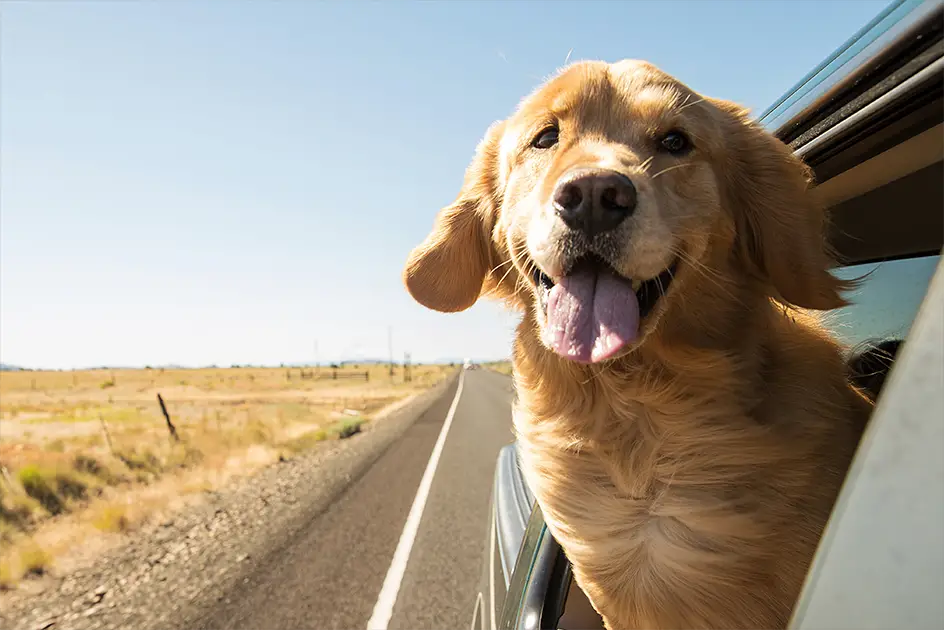
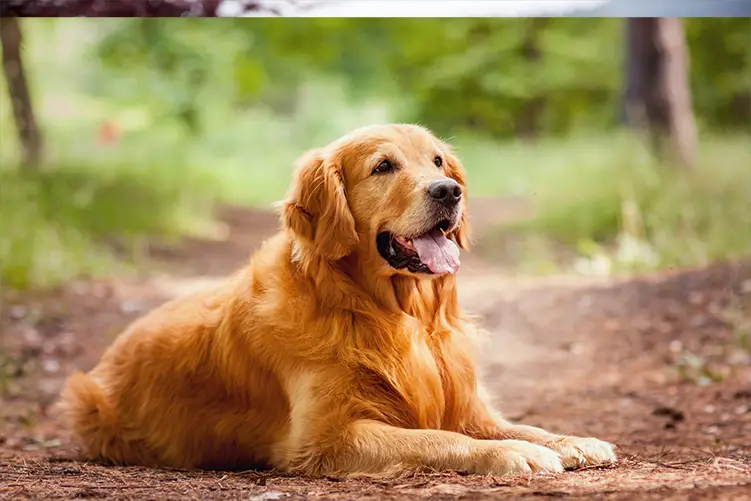
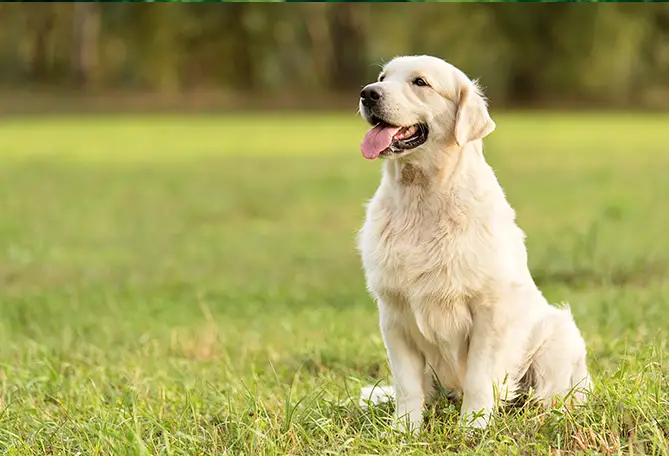
Golden retrievers are intelligent, loyal dogs that make excellent family pets. They are one of the most popular breeds not just in America but also worldwide, thanks to their friendly disposition, gleaming coats, and endearing smiles.
The Golden Retriever is bred to retrieve shot waterfowl like upland game birds and ducks during shooting parties and hunting. The term "retriever" comes from the breed's ability to recover shot game without causing damage to it because of its soft mouth.
Golden retrievers have a natural affinity for water and are simple to train to basic or high obedience levels.
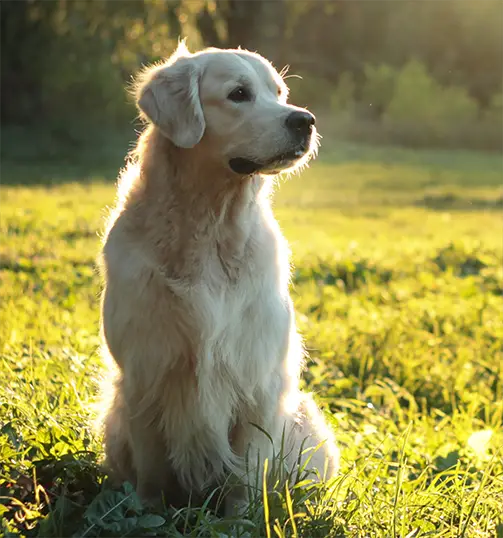
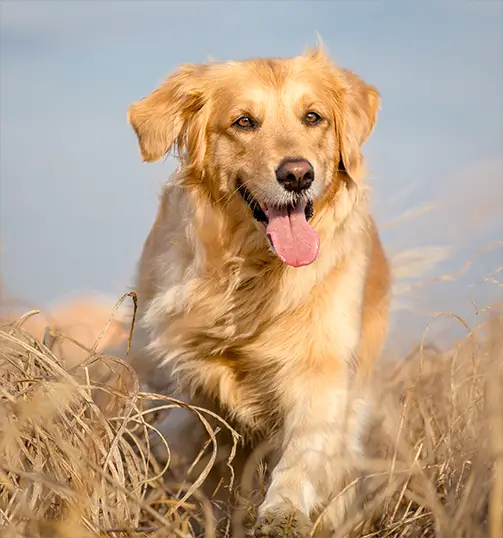
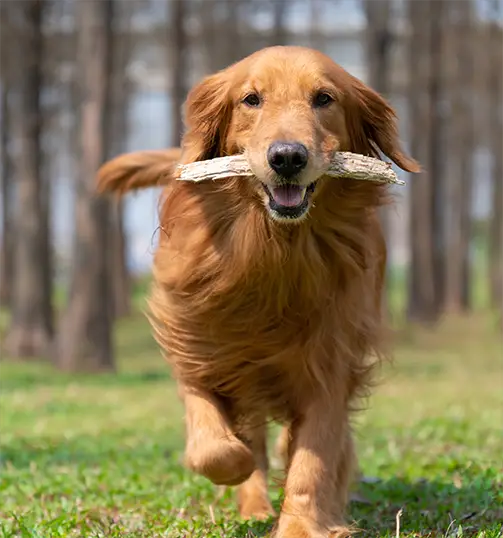
The Golden Retriever is a medium-sized dog with a sturdy, muscular body built, famous for its shiny, dense, water-repellant gold coat that gives the breed its name. The breed's hallmark is its friendly and intelligent eyes, broad head, straight muzzle and short ears.
As a purebred dog with a long history of popularity, several regional variations have evolved in the breed; as a result, the three subtypes of the Golden Retriever highlight the typical differences in size and coat. Nevertheless, all Golden Retrievers are yellow, blonde, or gold, and all subtypes are prone to the same health issues.
Golden Retrievers have an outer coat that lies against their body and keeps water away and a long, dense inner coat, which keeps them warm adequately in the outdoors. This breed of dogs is well-suited to living in the suburbs or the country environments. In addition, they shed a lot, especially during the change of seasons, and so need to be groomed on a regular basis.
Furthermore, Golden Retriever is a regular competitor in purebred dog conformation events. They are also well-known for being disability support dogs, such as a hearing dog for the deaf and a guide dog for the visually impaired. In addition, they've also been trained as detection dogs, hunting dogs, and search and rescue dogs.
The breed's pleasant, gentle temperament precludes it from serving as a professional security dog, but it has made it one of the world's most popular family dog breeds. Golden Retrievers are hardly picky eaters, but they do demand a lot of exercise (particularly two or more hours each day). Besides, they enjoy playing but are also quite easy to train.
These dogs have a strong affinity for water and fetch, which combine to make them the classic American dog.
As their name suggests, their coats range in color from bright golden to dark golden. The topcoat is somewhat wavy and resistant to water, and it sheds in modest amounts over the year. Besides, they have a soft undercoat that keeps the retriever cool during summer and warm in the winter; meanwhile, it sheds during spring and fall.
The coat of a Golden Retriever should never be overly long, as this can be disadvantageous to the dog in the field, particularly when retrieving game. The backs of Golden Retrievers' forelegs are lightly feathered, whereas the backs of their thighs, fronts of their necks, and the bottoms of their tails are heavily feathered.
According to the American Kennel Club (AKC) standard, the coat of a Golden Retriever must be a "rich, lustrous golden of varying colors," which excludes coats that are too light or too dark.
For many years, Golden Retrievers were thought to be descended from a now-extinct Russian tracker dog purchased from a circus. However, this breed of dog was first developed in the Scottish Highlands in the mid-nineteenth century.
The first golden retrievers were developed by Dudley Marjoribanks, the first Lord of Tweedmouth, when wildfowl hunting was a favorite activity among the wealthy Scottish aristocracy. The existing retriever breeds then were incapable of retrieving fallen game from both land and water due to the location's rainy climate and steep topography.
During the 1800s, advances in gun technology led to more fowl being shot at greater distances and over exceedingly difficult terrain, resulting in more birds being lost in the field. Due to the advancement in guns, the demand for a specialist retriever evolved, as pointer breeds and training setters in retrieval were shown to be ineffective. Consequently, work on the dog's breeding began in order to fill this critical role
The first cross was between a yellow-colored retriever named "Nous" and a female Tweed Water Spaniel named "Belle." The Tweed Water Spaniel, which was once prevalent in the border country, is now extinct.
In 1865, Marjoribanks bought Nous from an unregistered brood of black wavy-coated retriever pups. This cross resulted in a brood of four puppies in 1868. These four constituted the foundation of a breeding program that included the St. John's water dog of Newfoundland, the Irish Setter, the sandy-colored Bloodhound, and two additional wavy-coated black retrievers.
The pedigree was also inbred and chosen for its resemblance to Marjoribanks' concept of the ideal hunting dog. His idea featured a dog that was more energetic and stronger than earlier retrievers while also being gentle and trainable.
Russian sheepdogs, as well as any other working dog breeds, are not listed in these records. The Golden Retriever was powerful and active, with a gentle mouth for retrieving prey while hunting.
The Golden Retriever's personality is the breed's hallmark and is generally characterized as a friendly, kind, and confident dog breed. Golden Retrievers are naturally clever, calm, and obedient dogs that make excellent family companions, notably as they are tolerant of kids. Besides, they are generally friendly to both those familiar to them as well as strangers.
These dogs have a strong desire to please, which is why they answer very well to obedience training and are so famous as service dogs. They enjoy working as well, whether it is hunting birds or retrieving their guardian's shoes.
Since golden retrievers are rarely barkers and lack guard skills, they are unlikely to make ideal watchdogs. Their kind, trusting demeanor makes them a horrible guard dog. Nevertheless, some golden retrievers will alert you when strangers approach.
The Golden Retriever is not violent or hostile towards humans, dogs, or other animals, whether in the community or show ring. Also, they are not overly timid or nervous as it is not in line with the breed's temperament.
Golden Retrievers are also famous for their high intelligent demeanor. Not surprising why the breed took the fourth position in Stanley Coren's dog intelligence ranking.
Adult Golden Retrievers enjoy working and have a strong capacity to concentrate on a single activity. They can work till they pass out, so don't put them under too much stress
Golden Retrievers are commonly used for hunting waterfowl. They are taught to retrieve shot waterfowl like ducks and highland game birds during shooting and hunting parties. Since most waterfowl hunting takes place in small boats during the winter, Golden Retrievers are trained to wait patiently, sitting quietly and calmly until called to retrieve. The name "retriever" comes from the breed's ability to retrieve shot game without damaging it, owing to its soft mouth.
Furthermore, Golden Retrievers are frequently utilized as a backup upland flushing dog. They are trained to work in a set pattern in front of a hunter looking for upland game birds.
Genetic abnormalities and other diseases have been reported in Golden Retrievers. For example, Hip dysplasia is prevalent in the breed; hence, ensure you know the pedigrees when purchasing a puppy. The animal should also be screened for hip disease by the PennHIP or Orthopedic Foundation for Animals (OFA).
Obesity is another prevalent disorder with Golden Retrievers since they love eating. For that reason, adults should consume 3 to 5 cups of food per day, while puppies should consume only about three cups, depending on the food and the dog's activity level.
According to a 1998 health assessment undertaken by the Golden Retriever Club of America, cancer is the breed's leading cause of death, accounting for 61.4 percent of American Golden Retriever deaths. The most prevalent ones include hemangiosarcoma, mast cell tumor, lymphosarcoma, as well as osteosarcoma.
Golden retrievers can also possibly contract eye diseases, of which cataracts are the most prevalent. Nevertheless, they can also be plagued with progressive retinal atrophy, entropion, corneal dystrophy, glaucoma, distichiasis, and retinal dysplasia.
In addition, this breed may suffer from heart illness, particularly cardiomyopathy and subvalvular aortic stenosis. It may also be affected with joint problems, such as panosteitis, patella luxation, osteochondritis, etc.
Furthermore, Golden Retrievers can also be affected with skin diseases, of which flea allergy dermatitis is the most common. Sebaceous adenitis, seborrhoea, haemophilia, and self-inflicted lick granuloma are all conditions that can also affect them.
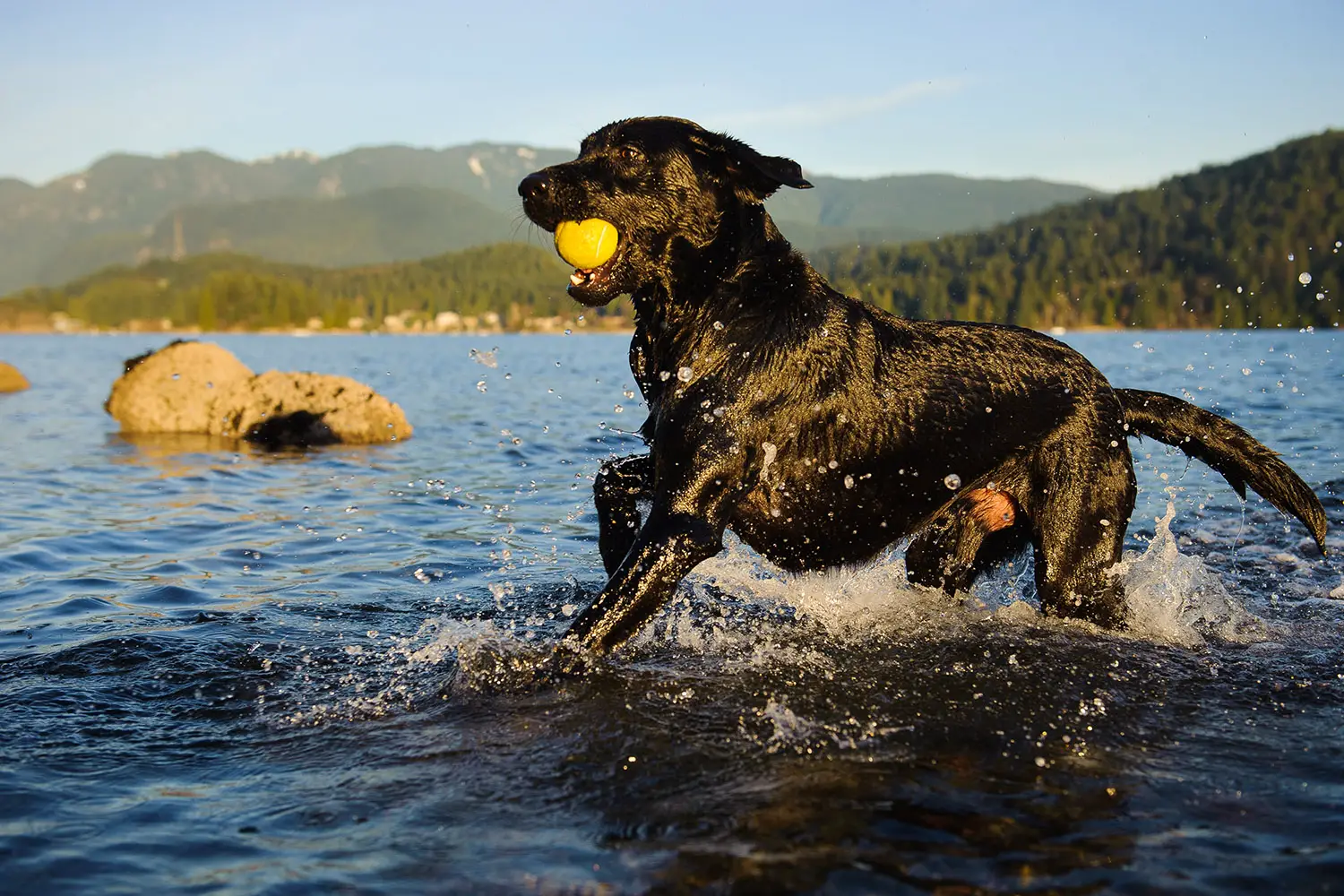
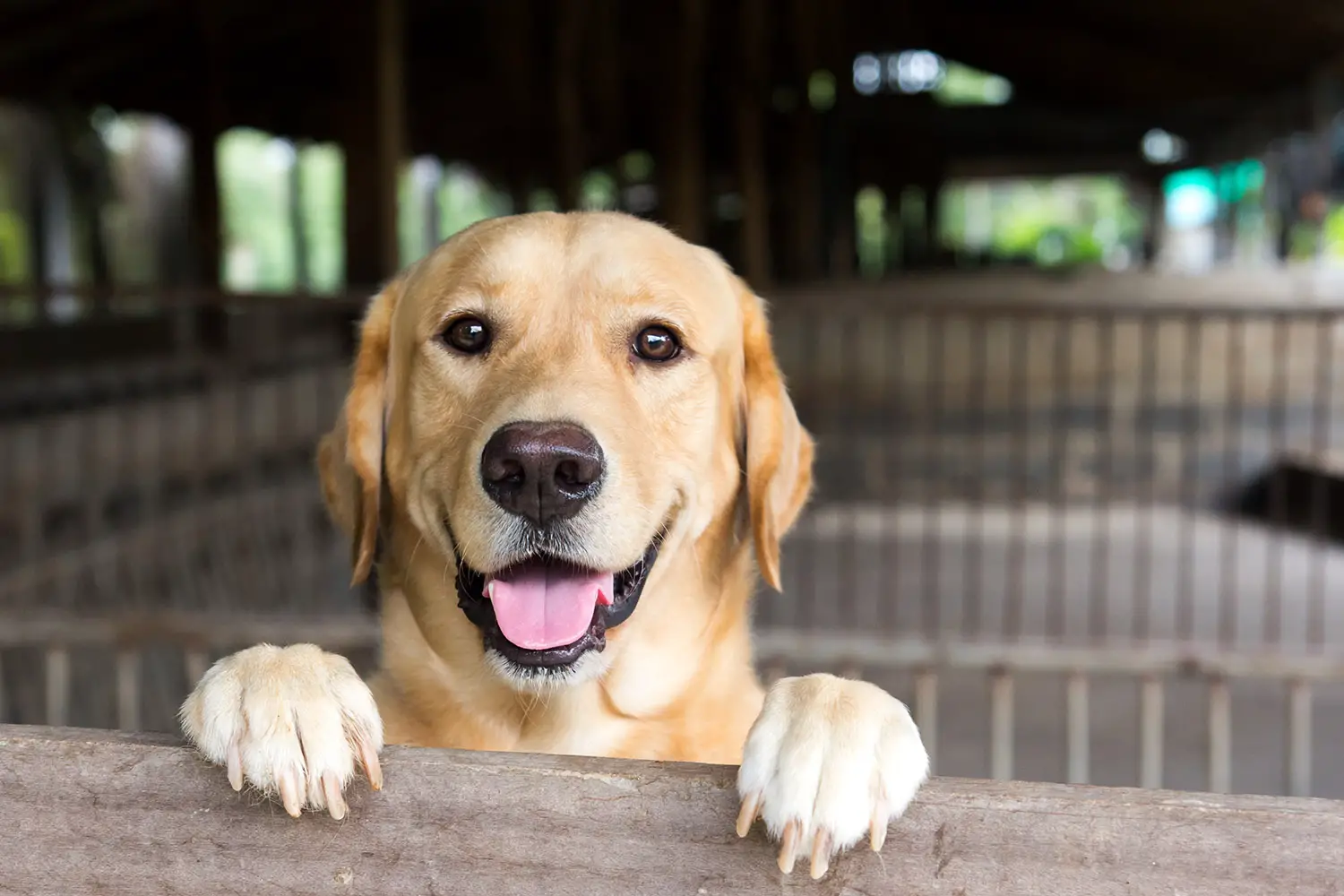
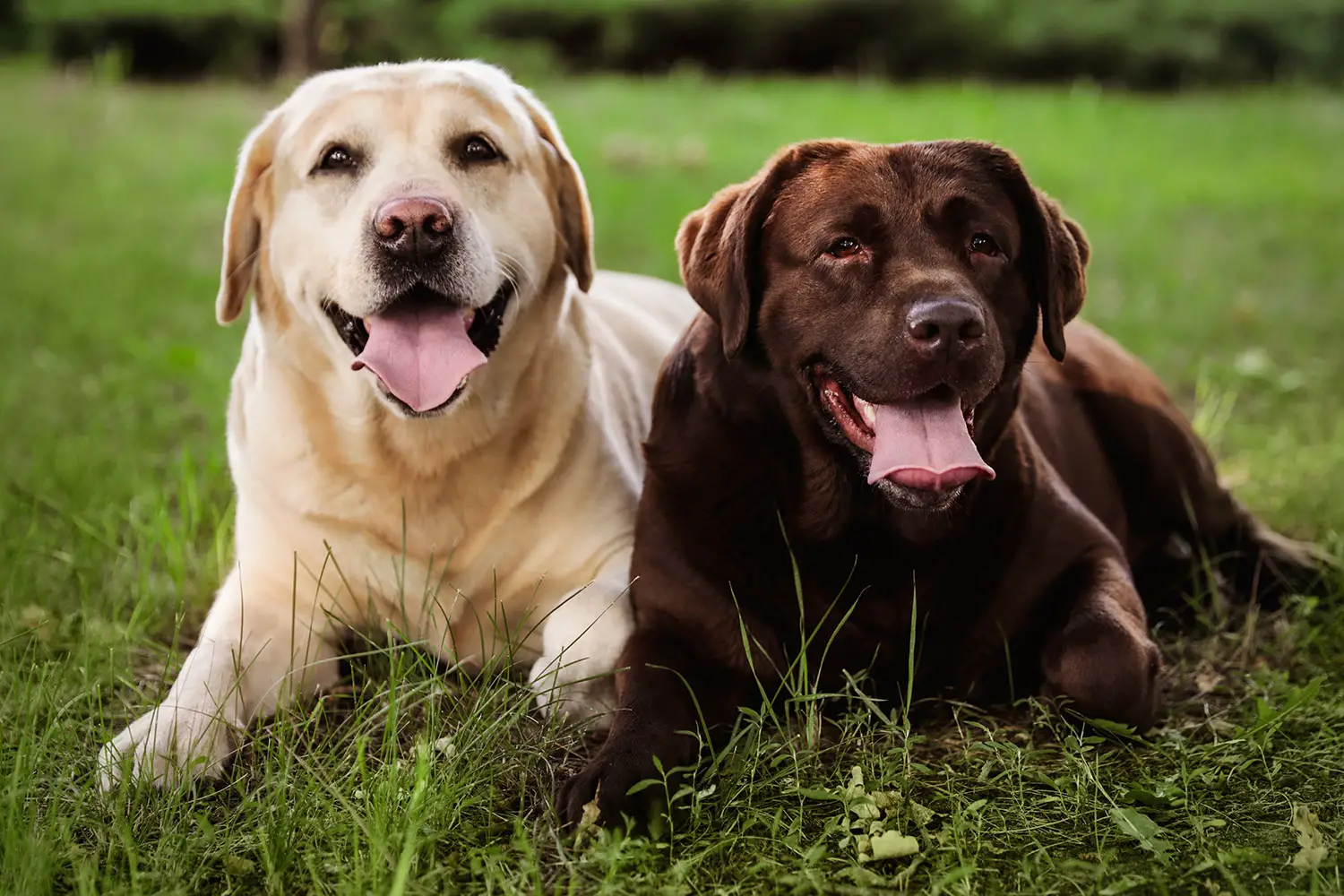
The Labrador Retriever, usually abbreviated to Lab or Labrador, has often ranked as one of the most popular dog breeds in the world, notably in the Western countries. It has also ranked frequently as the most popular dog breed in the U.S. for over ten years, based on the AKC yearly published statistics.
Labrador is a retriever-gun dog breed from the U.K., originally developed from Canadian fishing dogs imported from Canada. The American Kennel Club (AKC) registers over a hundred thousand new Labs every year. Still, when you factor in all the Labradors who aren't registered at all or who are registered with another organization like the United Kingdom Kennel Club, the fame of this family-friendly, stable dog is mind-boggling.
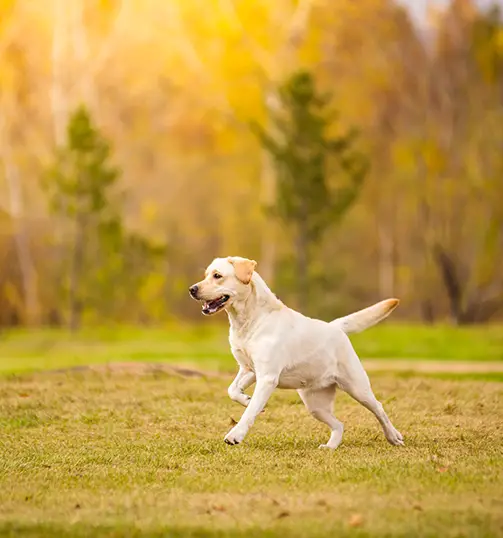

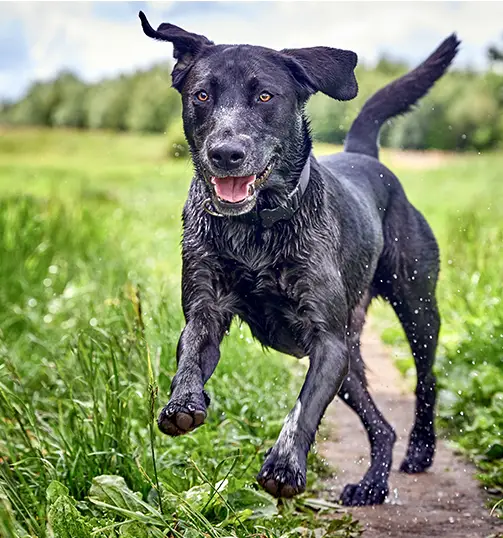
Labrador retriever dogs are known to be strong and sturdy. They have a muscular body and sturdy legs and are practically square in shape. Male Labs can grow to be 24 inches tall, which places them in the medium-size dog category, although their robust physique can make them appear much larger. A huge male's weight ranges from 65-80 pounds, whereas females weigh between 55-70 pounds. However, field type bred dogs are typically taller and have a slimmer frame.
Labradors are easily identified by their drop ears, broad head, and huge, friendly eyes that reflect the character, intellect, and gentle demeanor. The thick but relatively short double coat (which is highly water-resistant) and the well-known "otter tail" are the two hallmarks of the Labrador retrievers.
Their tail is sturdy and broad, and it practically straightens out from the topline. In addition, Labs have "Webbed" feet and more extended skin between their toes which helped them swim without drowning. The color ranges from black to chocolate, red/yellow, and virtually white.
The Labrador retriever is a breed that matures reasonably quickly, achieving adult height between six and twelve months of age, but it can still possibly fill out up to two years of age.
The coat of a Labrador Retriever ought to be short, thick, but not wiry. The coat is repellent to water; thus, Labs generally does not get cold when swimming during winter. This indicates that the dog's coat is slightly dry and greasy by nature.
The color of Labradors are categorized and registered as black (a uniform black color), chocolate(a moderate to dark brown color that was initially known as "Liver"), and yellow (ranging from creamy white to fox-red). However, DNA testing is now being required by many kennel clubs to confirm that the Labrador is purebred and free of dilution.
Labradors occasionally have small patches of white fur on their chests, paws, or tails, and purebred Labradors seldom have brindle colors or tan points like Rottweilers.
However, these stripes are a show dog disqualifier, but they have no influence on the personality or ability of the dog to be a decent pet or working dog.
Early in the 1700s, Labradors, initially referred to as St. John's water dogs( after the capital city of Newfoundland), used to serve as local fishermen's companions and helpers.
The dogs worked closely with their owners during the day, retrieving fish that had slipped away from hooks and towing in lines before returning home to spend the evening with the family of these fishermen.
St. John's Water Dogs were first imported to Britain in the 1830s via ships trading between Canada and Poole, Dorsetshire. These dogs ( St. John's Water Dogs) were then crossed with British hunting dogs that produced what is now referred to as Labrador Retrievers.
Early writers mistook the Labrador as the Lesser Newfoundland and the much bigger Newfoundland, with Charles St. John referring to the Lesser Newfoundland as the Newfoundland.
Colonel Peter Hawker described the original Labrador as being around the size of an English Pointer; having a black coat, that was more common than other colors, a long head and nose, fine legs, a deep chest, a short and smooth skin, and a tail that was not carried as high as the Newfoundland's.
Labrador retrievers, which are now among the top 5 most popular dog breeds, were nearly extinct around the 1880s. It was the Malmesbury family and other English lovers that were credited for preserving the breed.
The breed was extinct in Newfoundland due to government prohibitions and tax legislation. Besides, families were only allowed to have one dog, and keeping a female was extremely expensive; thus, female puppies were removed from litter.
However, the Labradors survived in England, and the Kennel Club acknowledged it as a distinct breed in 1903. In 1917, the American Kennel Club followed suit, and British Labradors were brought in the 1920s and 1930s to help establish the breed in the United States.
Following World War II, the Labrador Retriever became the most famous dog registered with the American Kennel Club(AKC), and they've maintained that rank ever since. They are also at the top of the rankings in most countries of the world.
Today, Labradors are used for drug and explosive detection, search and rescue, rehabilitation, disability support, and hunting retrievers. They also do well in all canine contests, including show, obedience, field, and agility., field, and agility.
The Labrador Retriever has a well-deserved reputation as one of the sweetest-natured breeds. They're sociable, willing to please and get along with both humans and animals. The Labrador disposition is described by the AKC as "gentle, friendly, outgoing, and tractable."
Their sense of smell enables them to zoom in on practically any scent and track it back to its source. It usually follows the trail of the scent until it locates it. Since Labs are originally developed to retrieve games like waterfowl, they are noted to have an extremely soft mouth.
Labrador retrievers have a reputation for being a calm and well-behaved breed that makes a great family dog. This reputation includes their tolerance, friendliness, and calmness with children of all ages and other pets. However, they have a propensity for chewing on things, although they can be taught to abandon this behavior.
Some pedigrees, especially those that have been bred for their ability to labor in the field, are very speedy and athletic. Their fun-loving exuberance and fearlessness may necessitate training and intelligent handling at some points to make sure it does not get out of control—an unruly adult can be somewhat problematic.
Labrador retrievers reach maturity at roughly three years of age; before that, they might have a lot of puppy-like energy, sometimes misinterpreted as hyperactivity. They are enthusiastic, so early leash training is recommended to prevent tugging when they are fully matured.
Labs are known for their insatiable desire to retrieve a ball (sometimes obsessively) and other sorts of activity like flyball, agility, or frisbee. In addition, they are not often noisy or territorial, though they will occasionally bark in response to noise, particularly from an unknown source. However, Labradors are not usually suited as security dogs as they are generally quite laid-back and trusting with strangers.
Labrador retrievers are inquisitive and explorative dogs who enjoy the company of people. They may follow people and intriguing scents for food, novelty value and attention. Besides, they can "vanish" or otherwise become detached from their guardians in this manner with minimal notice.
Labs are a breed that is very clever and capable of great single-mindedness and concentrates when motivated or stimulated.
Labrador retrievers were originally bred as duck retrievers; however, the British bred them as game-hunting companions after being imported back to England in the 1800s. They've evolved into exceptional retrievers capable of working in a range of environments, such as waterfowl and game hunting for a protracted number of hours at a time.
Labrador retrievers are naturally drawn to water, so if you enjoy swimming, there's no better companion to accompany you to the beach than a Lab.
Additionally, Labradors have a strong record of being service dogs, performing tasks like detecting contraband, working as sight dogs, and assisting people with daily tasks. Also, Labrador retrievers have had the most success as guiding dogs all around the world.
Labrador retrievers are a sturdy and healthy breed with a lifespan of 10–12 years. However, like with any breed, there are a few typical health issues that you need to be mindful of. Although not all Labs can have any or all of these illnesses, it's vital to be aware of them if you're thinking about getting one.
The breed's notable health issues include inherited ailments and obesity, although some pedigree lacks all.
A study carried out by the University of Sydney, and one conducted by Royal Veterinary College indicates that chocolate Labrador retrievers have a 10 percent shorter average life span than other Labrador colors. According to the research, Labs are also more prone to suffer from health problems. This finding is assumed to be owing to breeders' attempts to boost their numbers by selectively breeding coat color at the detriment of other critical health qualities.
Inherited disorders include hip and elbow dysplasia, which affect large dogs, albeit not as prevalent as other breeds. As a result, hip scores are generally recommended prior to breeding as well as joint supplements.
Labradors are also susceptible to knee disorders, particularly luxating patella, where the knee dislocates and returns to its original position.
In addition, some Labs can have eye problems, including progressive retinal atrophy, corneal dystrophy, cataracts, and retinal dysplasia. Therefore, a veterinary ophthalmologist must assess dogs that are intended to be bred for an eye score.
There is also a rare case of other disorders in Labradors, including hereditary myopathy, deafness, and autoimmune diseases. This incidence occurs either as inborn or later on in life.
Furthermore, Labradors can be affected by exercise-induced collapse (a syndrome that causes heat, collapse, disorientation, and weakness) after short periods of exercise.
The Labrador is the dog breed most prone to obesity out of all existing recognized dog breeds worldwide. Labs love eating, and if they don't get enough exercise, they can suffer from obesity.
Obesity is a terrible ailment that is often referred to as the number one nutritional issue in dogs. Besides, results from one research show that at least 25% of dogs in the U. S. are obese. As a result, Labradors should be adequately exercised and stimulated to avoid being overweight.
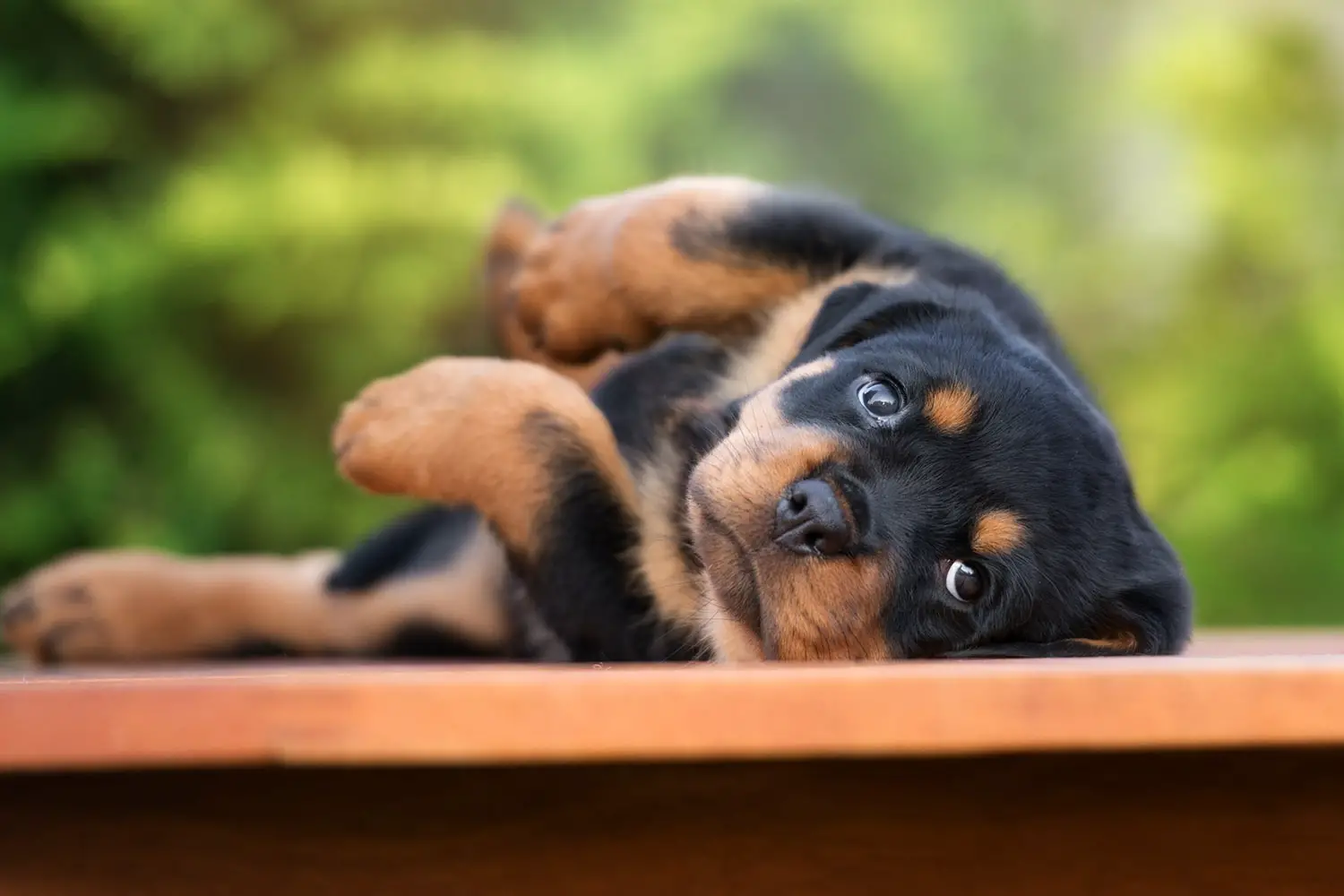
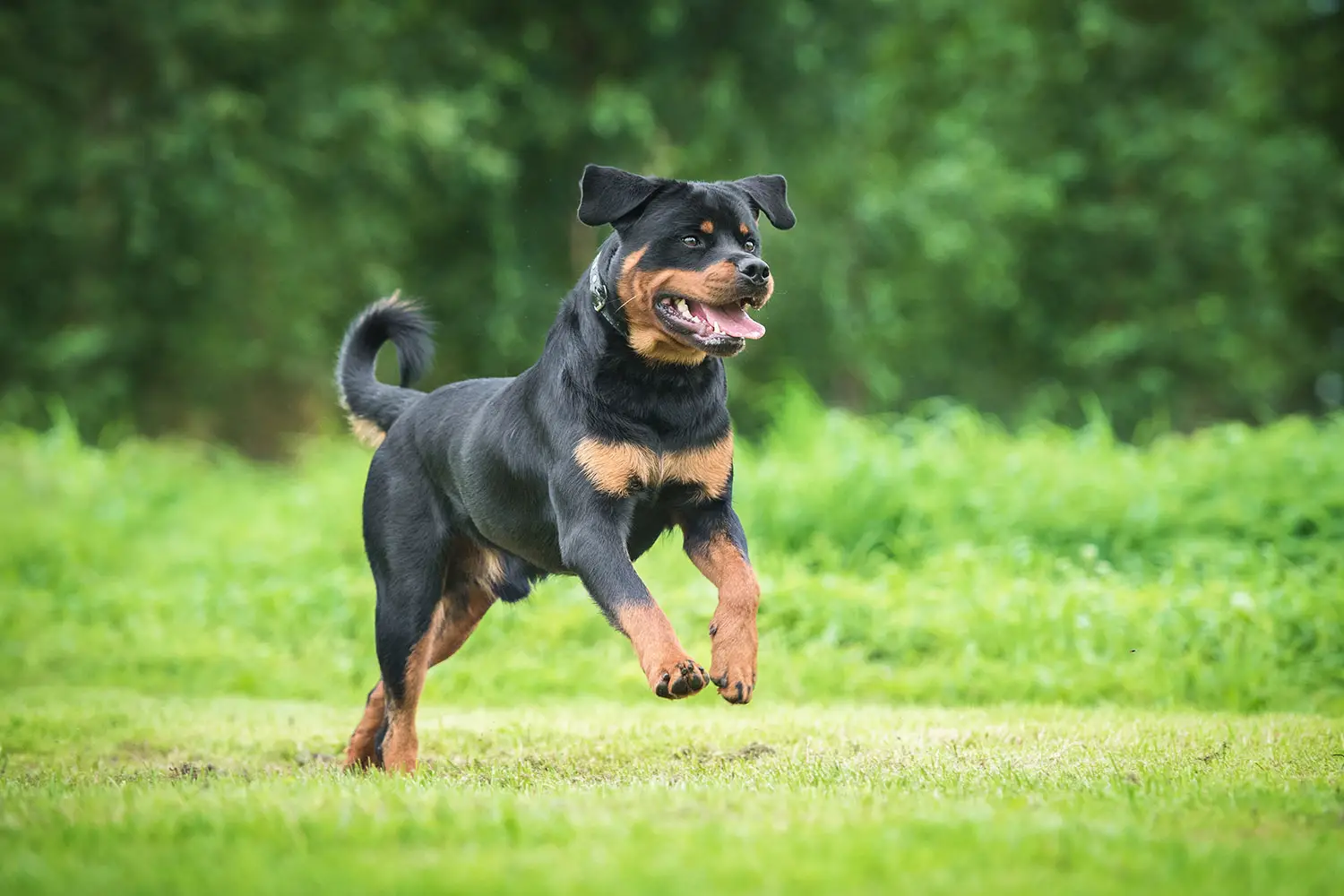
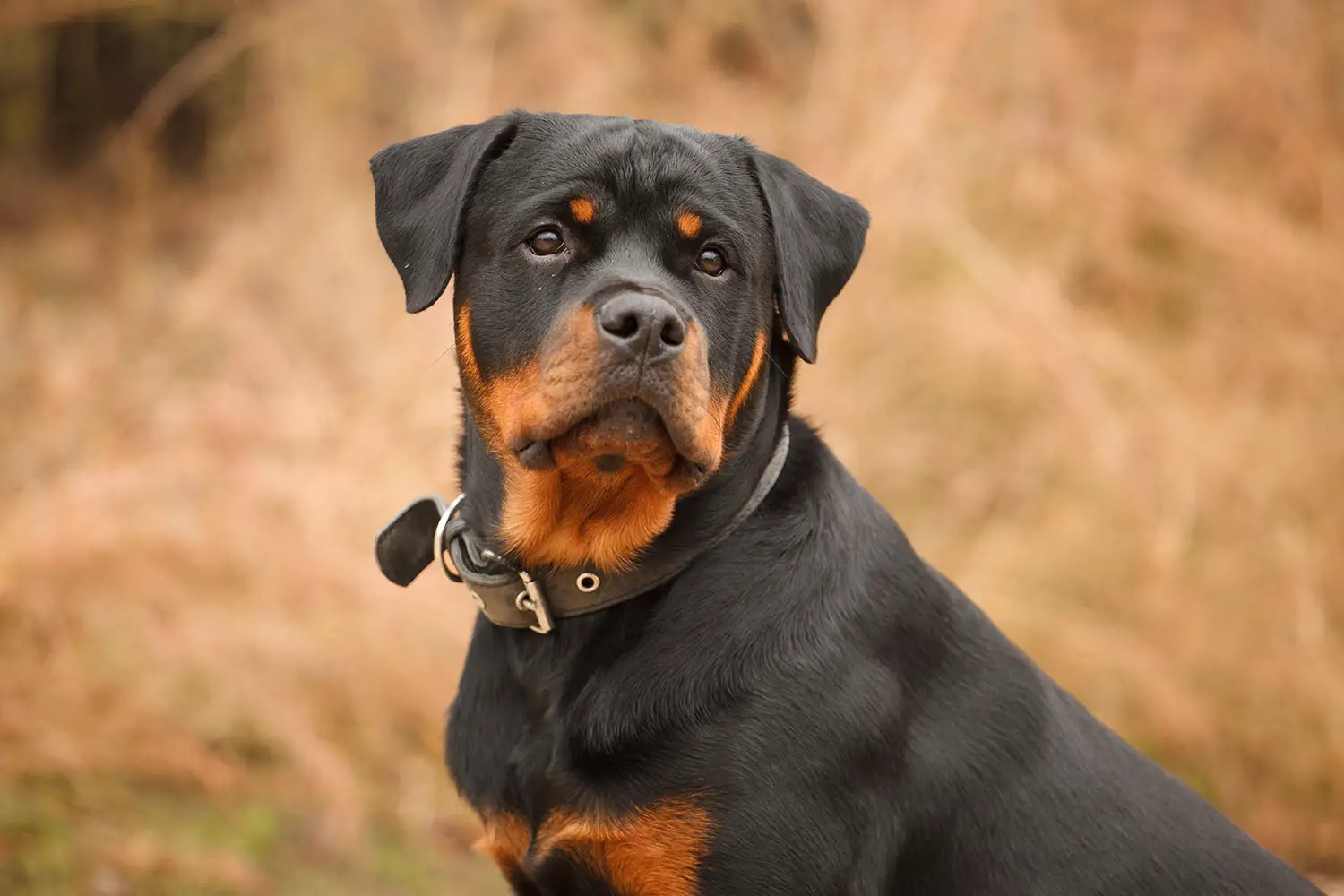
The Rottweiler, often abbreviated to Rotts or Rotties, is a domesticated dog breed, having a medium-to-large body size. It is also one of the most popular dog breeds in the United States and globally, generally for good reasons.
In Germany, the dog breeds were referred to as Rottweiler Metzgerhund, which means Rottweil butchers' dogs. Their primary function was to herd animals and carry carts packed with butchered meat to market, which lasted until the mid-nineteenth century when railways took over.
Although Rottweilers are still being used in herding livestock in many regions of the world, they are currently utilized as guard dogs, search and rescue dogs, and police dogs in many developed countries.
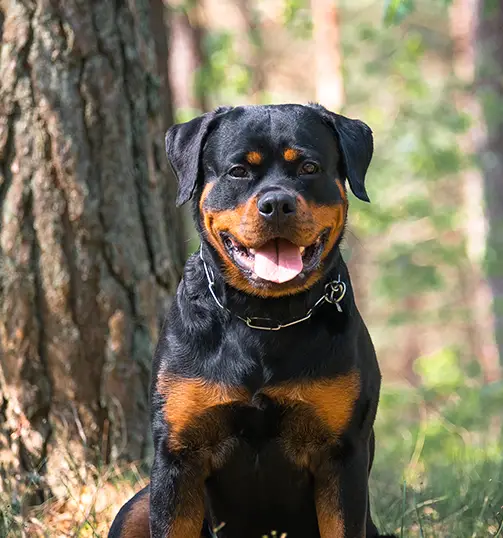
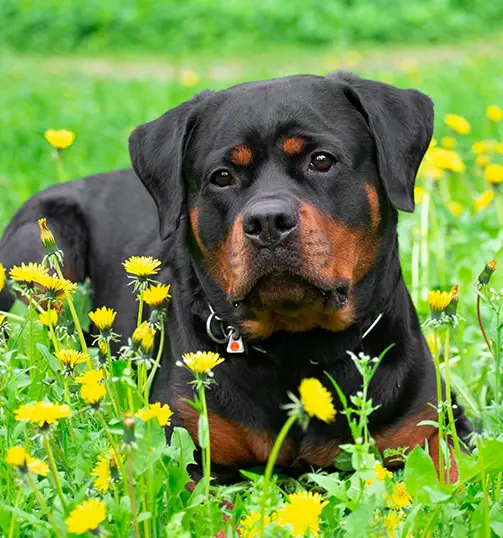
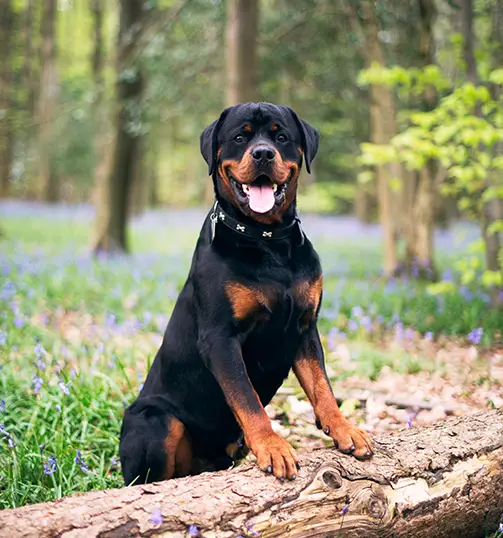
Rottweiler dog breeds possess a lot of strength, a black coat with well-defined rich tan stripes, and a sturdy appearance with great nobility.
These powerful dogs have giant heads, massive frames, hefty bones, and standing 22–27 inches at the shoulder with a weight of 80–135 pounds. Rottweilers have a lustrous, black, and low-maintenance coat.
This breed of dogs are generally black with rust to mahogany-colored stripes, appearing on their cheeks, legs, chest, over the eyes, each side of the muzzle, and below the tail. Their toes are also marked with tan lines that look like pencil marks.
Rottweilers have giant heads and ears that are close to the head and droop down slightly. They have square, strong muzzles but can drool a bit due to their loose flews (lips).
Although Rottweiler puppies have long, curled tails, you will always find a fully grown Rottweiler having just nubs on their backside. Advocates have once argued that docking a dog's tail safeguards them against getting hurt at work; nevertheless, the American Veterinary Medical Association has come out to say that this claim lacks a strong scientific basis, and the practice is frequently performed only for cosmetic reasons.
A Rottweiler's color and markings are quite different. According to the Fédération Cynologique Internationale (FCI) Standard, a Rottweiler ought to be "black with clearly defined markings of a deep tan on the cheeks, snout, throat, chest, and legs, as well as over both eyes and under the base of the tail."
However, the American Kennel Club recommends rust-colored stripes or mahogany that do not occupy more than 10% of the dog's overall color.
Based on AKC specification, all Rottweilers must have one mahogany spot on the cheeks and over each eye on the inner brow ridge. It also recommends one strip on each half of the snout; cheek stripes must not extend over the nose bridge, and the upper part of the nose must also stay black.
A Rottweiler's coat comprises the inner coat and an outer coat that is medium-length, coarse, thick, and flat. The inner coat should be visible on the thighs and neck and must not show through the outer coat.
Rottweilers in warmer climates may have lost their undercoat due to acclimatization. Although their coats are low-maintenance, they shed heavily seasonally (males) or before their seasons (females).
According to AKC breed standards, the coat of a Rottweiler is short and straight. However, the AKC considers a long or wavy coat to be a flaw.
The Rottweiler initially originated from the Roman Molossus, a mastiff-like dog, and derived its name from the old city of Rottweil, Germany, where it was initially called the "Rottweil butcher's dog."
Centuries ago, the then Rottweilers marched alongside the Roman armies across the Alps, guarding the people and herding the cattle that kept them going as they dominated the known world. As the soldiers moved about in the Rottweil region, these dogs met and crossed with native dogs in a spontaneous crossing, laying the groundwork for new breeds.
The Rottweiler's major role was to drive and guard cow herds, as well as to defend their masters and their property. According to Fédération Cynologique Internationale (FCI), the Rottweiler is one of the most ancient dog breeds.
Rottweil grew in popularity as a cattle market town, the German counterpart of a Texas cowtown, and the Rottweilers used to drive the cattle to the area for butchering. Whenever the cattlemen returned home after selling their herd, they placed their filled purses around the necks of their Rottweilers to keep their money safe from robbers. Butchers also used the dogs in the region to drive carts loaded with meat.
Over time, a top-notch watch and driving dog that could also be used as a draught dog emerged. Concurrently, cattle drives were eventually phased out in favor of rail transportation, and the Rottweiler was on the verge of extinction.
In the run-up to World War I, a surge in demand for police dogs sparked renewed interest in the Rottweiler. Rottweilers served in a variety of capacities throughout the First and Second World Wars, including messenger, ambulance, draught, security dogs, and ambulance.
On 13 January 1914, the first German Rottweiler club, the Deutscher Rottweiler-Klub (DRK) was formed. After that, the Süddeutscher Rottweiler-Klub (SDRK) or South German Rottweiler Club(in English) was also founded on April 27, 1915, and later became the International Rottweiler Club(IRK). Then, around 500 Rottweilers were counted by the DRK, while the SDRK counted 3,000 Rottweilers. However, the two clubs' objectives were dissimilar, as the DRK wanted to breed working dogs and did not place a premium on the Rottweiler's morphology.
In 1931, the American Kennel Club (AKC) officially recognized the Rottweiler as a standard dog breed. However, Rottweilers were first exhibited in Britain at Crufts in 1936, while a distinct register for the breed was established in 1966.
In reality, the dog breed's popularity peaked in the mid-1990s, when it became the most registered dog with the American Kennel Club (AKC) and was ranked as the ninth most popular purebred dog in the United States by the AKC in 2020.
Currently, Rottweiler is not only ranked in the top 10 most popular dog breeds in the U.S. but also a well-recognized breed in many countries of the world.
The Rottweiler is a friendly dog with a calm demeanor. It is faithful, biddable, obedient, eager to work, and responds to his surroundings with a high level of attention while being calm. His physical look is natural and rustic, and his personality is confident, stable, and brave.
The perfect Rottweiler is calm, self-assured, and brave, and never timid. He has a self-assured aloofness about him, and he doesn't build friendships with anyone at the first meeting. When it comes to new individuals or situations, he prefers to wait and see. He is devoted to his family and frequently follows them around the household.
Rottweilers are not highly temperamental dogs. They generally have a natural urge to protect their owner's family and property but never use force against those who aren't threatening them. Besides, they have a strong work ethic and are intelligent and adaptive.
According to the ARC (American Rottweiler Club), "Rottweilers are the best breed in the world, but we firmly believe they are not a dog for everyone."
Rottweilers need a "pack leader" who is calm, firm, and stable, or they will make the assumption of that job for you. Adults and puppies alike require exercise, socialization, and mentally engaging challenges. With these essentials, your Rottweiler will be a delightful companion; without these things, it may become aggressive and out of control.
Nevertheless, there are some distinctions between the sexes. The males are quiet but vigilant, always scanning their environment for any threats. Females are easier to manage and may be more loving than males. In a nutshell, both sexes are extremely trainable, but they can be obstinate.
Rottweilers need a rigorous, persistent discipline that isn't harsh. A strong remark can often suffice as a rebuke, but only if your authority has been firmly established. If you don't cooperate, it can try to bully or bluff you. This is not a dog for individuals who aren't confident in themselves or don't have the time to commit to training and supervision.
To earn Rottweiler's respect, you need to set limits, establish boundaries, and teach penalties for improper conduct, although both take time and patience.
A variety of factors influence their temperaments, such as heredity, socialization and training. Puppies with good temperaments are inquisitive and fun-loving, and they enjoy approaching people and being held by them.
With that said, it is advisable that you choose a neutral puppy rather than one who is abusing his littermates or retreating in the corner. In addition, try to meet with either of the parents, preferably the mother — to confirm that they have pleasant personalities that you're comfortable with. Notwithstanding, meeting the parents' siblings or other relatives can also help you assess what a puppy will be like as an adult.
According to the American Kennel Club, Rottweilers love their guardians and may act clownishly towards family members and friends. Still, they are territorial and will not tolerate strangers until they have been properly introduced. Hence, it is necessary to provide them with obedience training and socialization.
According to a study published in 2008, male Rottweilers have stronger confidence, intelligence, play drives, and defence than female ones.
Rottweilers have always been working dogs, bringing livestock to market, driving carts for butchers, defending the household, and even transporting money in money belts tied around their necks to and from the market.
They were one of the first police dogs and served in the military with honor. Currently, they work in herding and security and are also great family guardians and companions. You will also find Rottweilers participating in herding competitions, and they can possibly compete with the sheepdogs and shepherds in the field.
There isn't anything that makes a Rottweiler happy other than having something to do. They can, however, do more than protect their home and family.
Aside from being used as service and carting dogs, Rottweilers can also be used as therapy dogs, guide dogs, obedience competitors, customs inspectors and, of course, devoted friends since they are intelligent, untiring, and eager to please.
Rottweilers are relatively disease-free and generally healthy dog breeds with a lifespan of 9-10 years. Nevertheless, as with all breeds, they are susceptible to certain ailments, such as hip dysplasia. As a result, for many years, the different Rottweiler breed clubs have had X-ray testing procedures in place.
In addition, due to the breed's high growth rate, osteochondritis dissecans, a disorder affecting the shoulder joints, can as well be a problem. Hence, A good breeder will have all breeding stock's elbows and hips X-rayed and examined by a recognized specialist, with the paperwork to back it up.
Hereditary disorders also do exist in some bloodlines, as they do in any breed. The Rottweiler is predisposed to osteosarcoma, one of the most prevalent causes of their early death.
In addition, Rottweilers are more prone to parvovirus infection than other breeds for unspecified reasons. Parvovirus is an extremely infectious and lethal disease that affects pups and young dogs. Also, Rottweilers, as with the majority of large-breed dogs, are prone to dilated cardiomyopathy.
Furthermore, Rottweilers are likely to be obese if they are overfed or under-exercised. A few of the consequences of obesity can be very severe, such as diabetes, skin disease, heart failure, arthritis, breathing difficulties, reproductive issues, lower disease resistance, and overheating triggered by the dense jacket of fat underneath the skin.
With that said, it is recommended that when looking for a puppy to buy, locate a reputable breeder that can show you health certificates for both your dog's parents. Health certifications prove that a dog has been checked for and cleared of a certain disease. For Rottweilers, expect health clearances from OFA (Orthopedic Foundation for Animals) for hip dysplasia, hypothyroidism, elbow dysplasia, and von Willebrand's disease. You should also expect to see health clearance from Auburn University for thrombophilia and the CERF (Canine Eye Registry Foundation), certifying that the eyes of the Rottie you're purchasing are normal.
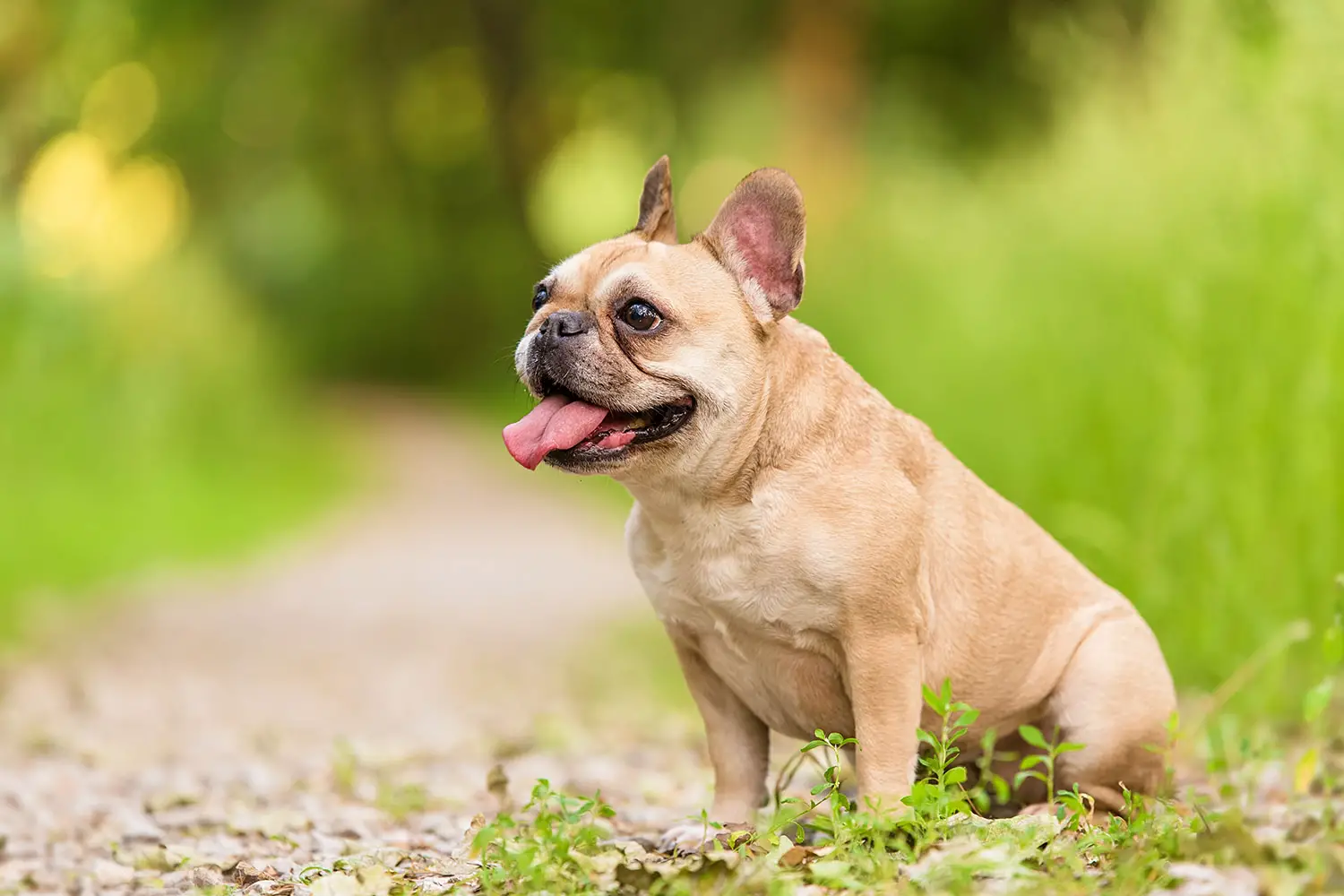
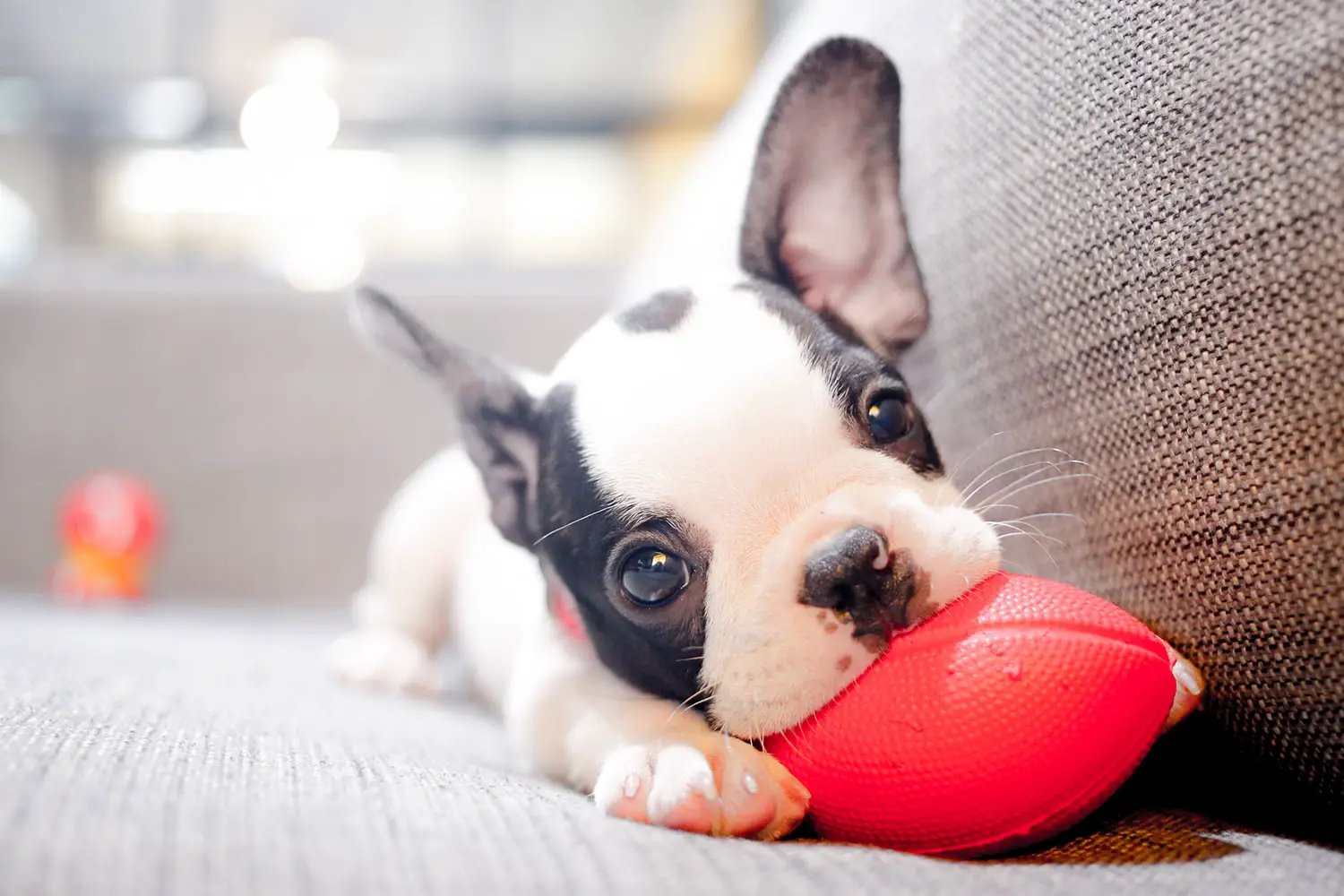
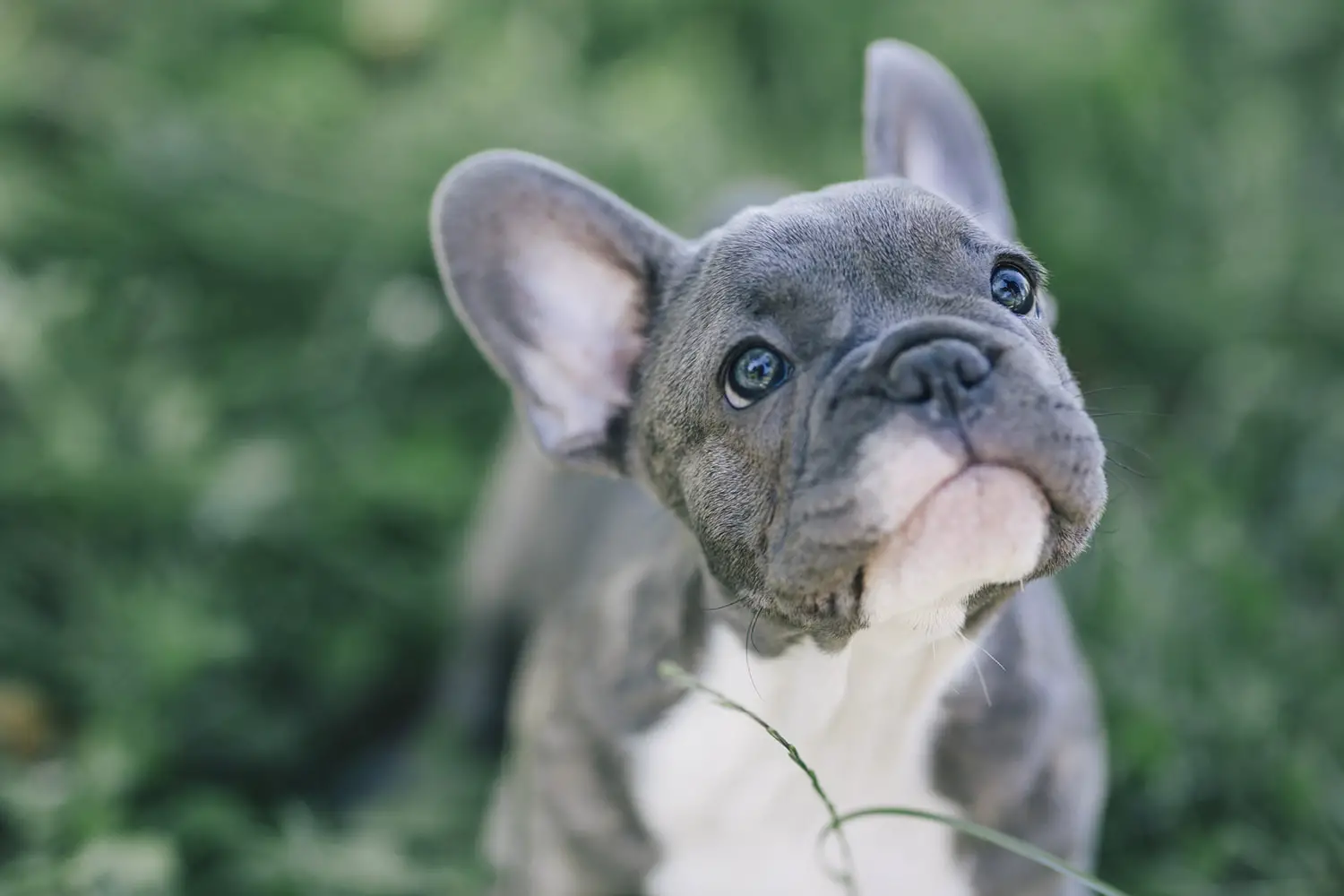
The French bulldog was originally bred to be a companion dog. This dog breed was developed from the crossing between local ratters in Paris, France and Toy Bulldogs brought from England in the 1800s. They have a pleasant, mild-mannered demeanor and are stocky, compact canines.
In 2020, the French bulldog was ranked as the second-most popular registered dog breed in the U.S. by the AKC and the second-most popular registered dog breed in the U.K. by the U.K.'s Kennel Club. In 2017, it was also ranked the third most popular dog in Australia.
French bulldogs used to be superb ratters in addition to being companion dogs; however, their primary duty now is to be fantastic family buddies and show dogs. This friendly breed will be appealing to even first-time pet parents and apartment dwellers.
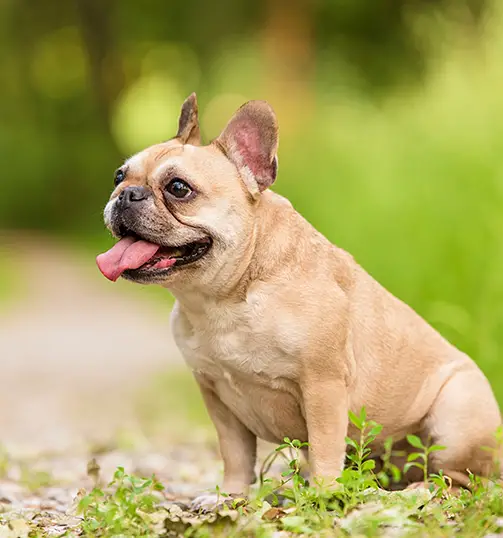
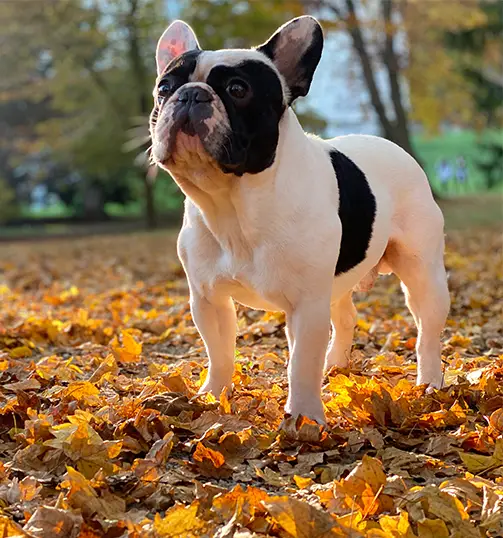
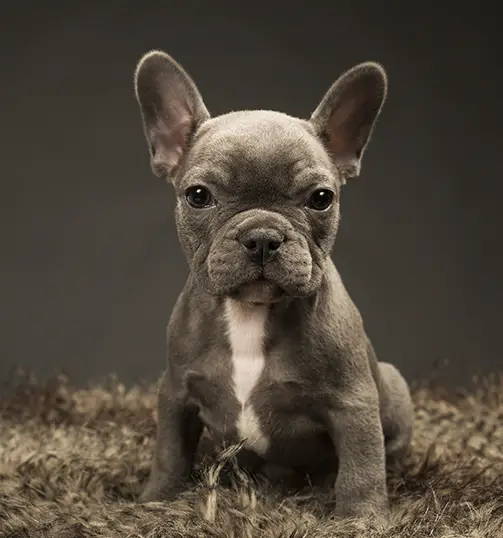
According to the AKC standard, the French bulldog ought to be muscular, with a silky, loose coat that forms wrinkles. The American Kennel Club standard weight for this dog breed is a maximum of 28 pounds, and the head should also be square-shaped and huge, along with pointed bat-like ears.
They have a stocky, compact build, standing 11-13 inches tall and weighing 16–25 pounds.
The French bulldog is unquestionably charming, even though it lacks the handsome grace of a golden retriever. Except for the wrinkled skin around their shoulders and face, they have a small, compact frame that is well-formed and quite muscular.
French Bulldog coats are smooth and available in a range of colors, including white, cream, and fawn; however, they can also have brindle markings on their body. Their beautiful, lustrous coats shed moderately and only require periodic brushing to remain clean. The cute "squished up" face and dark brown eyes are the hallmarks of this dog breed.
The French bulldog has a short, silky, lustrous, and beautiful coat. Its skin has a soft texture and is loose and wrinkled, notably on the head and shoulders.
French Bulldogs are available in a wide range of colors. According to the French Bulldog Club of America, the acceptable color for this dog breed includes fawn, all brindle, white, brindle and white, and any other color with the exception of those that are disqualifying. Solid black, liver, mouse, black and tan, white with black, and black and white are all considered disqualifying colors.
Brindle French Bulldogs have a fawn base coat with black hairs extending in bands, producing a coat that can vary from a tiger brindle with fawn hairs predominating to the more prevalent dark brindles with predominant black hairs.
In some dogs, the black hairs are so plentiful that there is merely a "trace of brindle," as defined by the French Bulldog standard. However, there should be adequate fawn hairs in this trace to show the brindle pattern. It may be hidden in a portion of the body; therefore, if a judge is concerned about the location of the trace, they should request the exhibitor to point it out.
However, avoid any breeder who claims that a specific color is unique and so more expensive. On the other hand, keep in mind that you can't simply order a specific color and gender puppy. For instance, putting your mind on getting a fawn female can lead to disappointment since you don't know whether the litter contains only brindle and cream males.
The roots of the French bulldog are controversial, although it is certain that the breed descended from the English dwarf bulldog breed known as the Toy Bulldog, which was famous in some parts of the country. Many people believe that the English bulldog was bred smaller and then transported to France, where the French bulldog evolved over time.
By 1850, the Toy Bulldog had grown popular in England, and by 1860, it had made an appearance at conformation exhibitions.
This dog breed was well-known among lace workers in Nottingham city. As they immigrated to France for greater possibilities, they naturally carried a variety of canines with them, notably the Toy Bulldogs. The dogs gained popularity in France, and a market for miniature imported Bulldogs arose, as breeders in England continue to transport Bulldogs they considered too small or with faults to France. By 1860, the Toy Bulldog was almost extinct in England as a result of the exportation.
The French bulldog continued to thrive in France and Europe, and its elegance soon attracted the Americans, who brought them here in 1885 to start a breeding program in the United States. Society ladies notably owned these alluring dog breeds, and they were first shown at the Westminster Kennel Club Dog Show in 1896.
The AKC (American Kennel Club) quickly recognized the breed, and by 1906, the French bulldog was the sixth most popular dog breed in the United States. The popularity of the French bulldog continues to soar and has now ranked the second most popular dog breed in the U.S.
Not just that, they are now one of the well-known companion dog breeds in the world, and you can find this loving dog in almost every household in developed countries (especially the western countries).
The French bulldog, like several other companion dog breeds, needs constant human interaction. This is an intelligent, affectionate dog who desires and requires a lot of time with its family.
The term "chilled out" is commonly used to describe French bulldogs; however, they also like playing. They get along well with other pets as long as they've been properly socialized.
This bread can easily be trained provided treats are involved, and they'll be more willing to learn if training seems like a game, as they're free thinkers who enjoy having fun.
French Bulldogs may have separation anxiety if left lonely for over a few hours, which is particularly true when they are young but continues into adulthood.
This breed of dog is often known as a "Frog dog" because of the manner in which they sit with their hind legs stretched out and their big round face. They are also called "clown dogs" due to the fact that they are believed to be fun-loving.
The French bulldog is a breed that rarely barks, is tolerant and friendly with its owners, and can cohabit with other pets.
This breed is also brilliant. There are several exceptions to this typical degree of dog intellect; Princess Jacqueline, a French Bulldog who passed away in 1934, was said to speak 20 words in good conditions.
However, French bulldogs can be a little naughty, so they'll require a guardian that can laugh with them while also adhering to their training regime.
French bulldogs were developed to be companion dogs, but they were also used as a ratter to keep rats and other pests out of the house. People of all kinds of life have owned this desirable dog breed due to their loving, friendly demeanor.
Apart from providing companionship, these endearingly odd-looking canines served a specific marketing intent: they were excellent icebreakers and conversation openers with even the most awkward customers.
French Bulldogs are particularly plagued with health issues as a result of selective breeding. Although responsible breeders try to uphold the highest breed standards set by kennel clubs, the breed is susceptible to inherited health issues.
So, if you're thinking about getting a puppy of this breed, it's essential to be informed of some of the breed's typical health issues. To address these concerns, we recommend that prospective owners get DNA test results as well as health clearance before purchasing one. The following health issues have been linked to French Bulldogs:
Breeding selection in French Bulldog increases skull deformity, known as brachycephaly, resulting in the Brachycephalic airway obstructive condition. As a result, many French Bulldogs pant and thrust out their tongue even when doing simple tasks like walking.
This dog breed suffers from a variety of adverse effects of the Brachycephalic condition, including breathing difficulties (such as loud breathing and snoring). It happens as a result of their extended soft palate, narrow nostril openings, and relatively narrow tracheas. If not treated properly, this condition might result in death in French Bulldogs.
Since the French bulldog has only one short coat combined with their impaired breathing mechanism, it is difficult to maintain their temperature effectively. It means that the dog is prone to becoming cold and is susceptible to heatstroke in humid and hot weather. In addition, allergies are also common in French Bulldogs, which can lead to eczema on the body.
Congenital hemivertebrae (also known as "butterfly vertebrae") are common in French Bulldogs and can be seen on an X-ray. The congenital hemivertebrae is a deformity of one or more vertebrae, resulting in a wedge or triangle shape. This deformity can happen by itself or in conjunction with other vertebral malformations.
How to choose the right dog breed for yourself?
Suppose you are planning on bringing a puppy or dog into your home; congrats on making such an exciting decision. Whether it's your first dog or an addition to your existing family pets, and whether you want an older rescue dog or a new purebred puppy, we're here to guide you on choosing the right dog for your lifestyle and personality.
There is no one-size-fits-all approach to finding a new dog. What matters is that you find the best dog that perfectly suits your lifestyle and personality.
There are nearly 150 purebred dog breeds recognized by the American Kennel Club, and that doesn't include the array of "mixed" breed munchkins looking for where they can call their home. Since each dog breed is different, it is vital to do your research and identify your expectations so that both you and your dog are prepared for a lifetime of happiness.
But then, how do you choose a dog that will suit your personality and lifestyle? Don't worry; we're here to assist you in getting started on your search.
Think about your lifestyle
Below are some questions you should ask yourself when considering which dog is best suited to your lifestyle. Before then, you need to keep in mind that a potential breeder will likely ask you similar questions so as to decide if your household is fitting for one of their puppies; hence, it may help if you put down your answers now.
- Do you have kids, or do you intend to have children?
- Are you someone who is active or someone who is more laid-back?
- When it comes to socializing and training a new puppy, how much time do you have?
- Is your income enough to pay for veterinary visits, pet insurance, dog food, supplies, and more?
- Do you have any allergies?
- How frequently do you travel for business or pleasure, and what are your arrangements for your dog during such times?
- How long do you spend each day away from home?>
Think about your expectations
You also need to consider what is it that you are looking for in a dog:
- Do you have a preference for a large dog or a small dog? Note: Despite common assumptions, your living condition does not have to affect your response. Even apartment residents can live comfortably with some larger dog breeds. The dog's living environment does not have to be a set size as long as the dog's exercise demands are met (via long walks, daily activity sessions, and excursions to the dog run).
- Do you need a dog for a particular activity (like running, agility, hiking, etc.)?
- Do you have enough time to devote to grooming a dog (and are you particularly concerned about shedding)?
After you've answered these and the preceding questions, you should be able to cut down your options drastically. A Border Collie, for example, would be a good choice if you want a dog that complements your active lifestyle and wants to attempt agility. Simultaneously, Papillon will be a good alternative if you want a smaller breed, but your interest is the same.
Furthermore, a French Bulldog or Labrador Retriever will also be a good choice if you prefer a family-friendly dog that requires moderate exercise and little care
Get to know the breed
After you have a general notion of what kind of dog you want, research all you can about that breed. Although each dog is unique, getting this information can help you decide if a breed is suited for your lifestyle and needs when buying a puppy from a reputable breeder.
A few ways you can learn about each dog breeds include:
- On the American Kennel Club(AKC) website.
- Through the breed clubs: every dog breed has its AKC-affiliated club, which is composed of experienced breeders and fanciers. So, you can find the details of a particular breed on the AKC-affiliated club's website.
- At a dog show
- In the AKC New Complete Dog Book.
Locate a responsible breeder
If you are sure you're ready to get a new puppy, have chosen the correct breed for yourself, and have completed all of your research, the next step is to locate a reputable breeder that will sell you a puppy.
You can begin by going to the website of an AKC-affiliated breed group, which will probably let you search for breeders in your area. However, try to visit the puppies prior to when they will be ready to come home and ensure you also meet with at least one of the parents(preferably the mother).
Be open to ask some questions(beginning of 3rd milestone)
Once you've located a responsible breeder, be honest about what you're looking for in a dog. The breeder will be familiar with anticipating a dog's disposition and can assist you in picking the best puppy from the litter for your requirements.
Additionally, the breeder will provide you with guidance on socializing and training your puppy and its training and exercise requirements to guarantee that your grown dog is everything you longed for in a family pet.
Choosing a grown dog
One of the most significant advantages of responsibly bred dogs is their predictability. Some families, particularly those with children, may prefer buying a purebred puppy from a responsible breeder; that has tested their dogs' health and temperament. In contrast, other prospective dog owners may consider an older dog as the best choice for them.
Therefore, when choosing an older dog, keep in mind what you expect in a pet and your lifestyle, as described above, and address these variables with the dog's club.
Picking a purebred rescue dog
If your preference is the purebred rescue dog and you are looking for one for adoption, then visit the AKC Rescue Network, the largest network of dog rescues in the U.S.
There are many AKC breed clubs that dedicate resources and time to the rescue of breed dogs. Breed clubs such as the Bulldog Club of America oversee breed rescue directly, while others, such as the Golden Retriever Club of America, offer resources like fundraising, online listings, coordination, and grants to various local breed rescue organizations
So, be cautious of rescue organizations that charge excessive "adoption fees" or sell rescue dogs on the internet.
In addition, do your research about the rescue dog breed you're thinking of adopting as there are many misconceptions regarding rescue dogs around nowadays.
According to the National Animal Interest Alliance (NAIA), the number of dogs entering shelters in the United States recorded an all-time low in 2015, dropping to around 5%. The research is noteworthy because it dispels widespread myths about purebred dogs in shelters. It also debunks the myth that dog buyers who want purebred pets are somehow endangering a shelter dog by doing so.
Which dog breeds are best for first-time owners
It might seem stressful to become a first-time dog owner, but if you and your puppy are a perfect fit, it can be a wonderful and fun experience. With so many dog breeds to choose from, it can be not easy to know which one best suits your lifestyle, activity, and grooming needs.
Nevertheless, you need to be certain that you are ready to own a dog before proceeding to get one for yourself. While dogs are wonderful friends, don't get one unless you're sure you'll be able to provide consistent care and attention for the rest of the dog's life.
Before you choose your ideal dog
As a first-time dog owner, the perfect breed for you is the dog that matches your enthusiasm and attention level since each dog has its own disposition and activity/use.
So, before you commit to a particular breed, ensure you compare your lifestyle and personality to each breed's profile to ascertain if there is a match; with that, you will probably have a healthy, friendly, loving relationship with your dog.
For example, if you prefer a low-energy lap dog, stay away from high-energy dog breeds; however, you can opt for an athletic dog with endurance if you need a dog that can go on a run with you.
Additionally, if you want a dog that requires less care, then consider a low-maintenance breed or adopt an adult rescue dog from a shelter.
Dog breeds that are excellent for first-time owners
While it's difficult to anticipate how you and your dog will fare together for the rest of your lives, specific breeds are especially suitable to first-time owners because of their calm temperament, sweet disposition, and devotion.
So, If you're sure you're ready to own a dog, then check out this list of the best dogs for first-time owners to pick a breed that is perfect your you and your family
Boxer
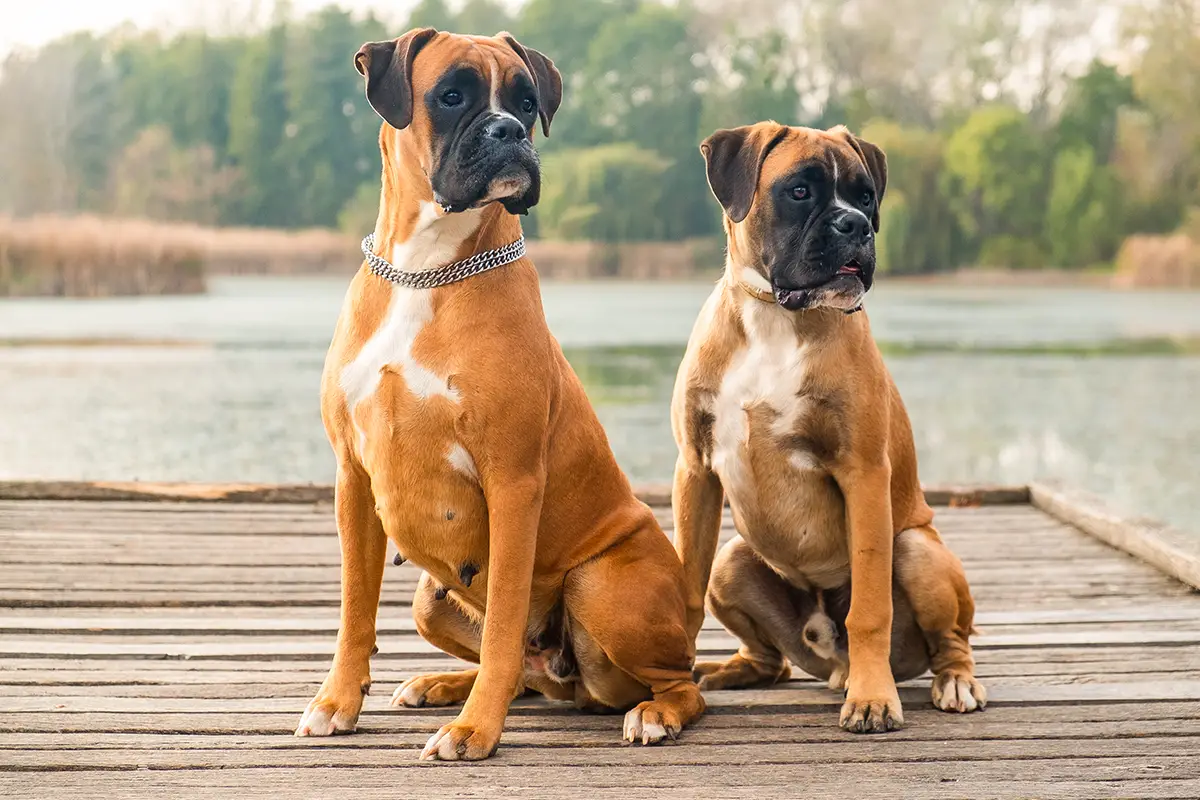
The Boxer enjoys being with its family despite being instinctive guardians. Their craving for human affection, particularly from children, is one of the breed's most noteworthy personalities. In addition, they are tolerant, passionate, and loyal with children, but also protective, making this breed a popular choice for families. The Boxer does not require much grooming, but it does require daily exercise.
Collie
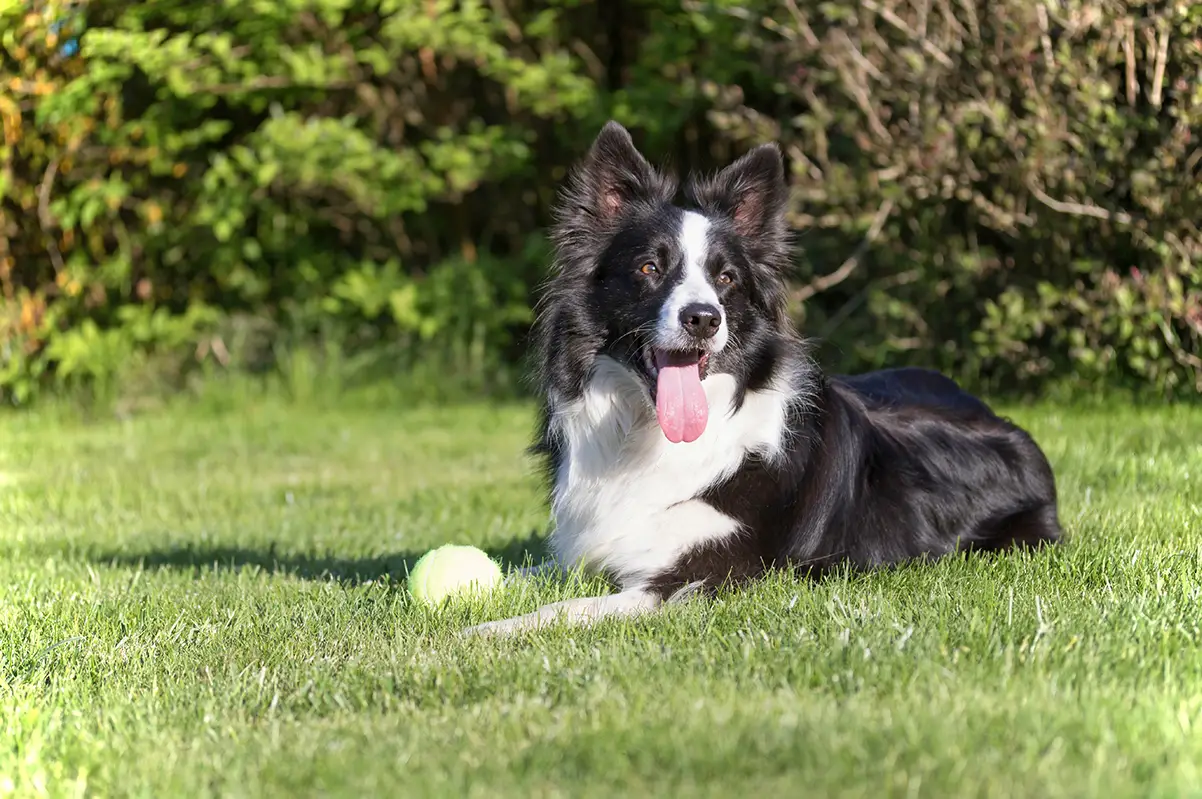
The Collie is an affectionate, loyal, and dedicated family dog, notably with children, despite its size and activity. While it needs walking every day, Collie can also be a couch potato. Irrespective of its long, immense hair, a rough Collie only requires brushing once every week, though the necessity for brushing may rise during shedding season. Collies are also known for being a highly clean breed with no doggy smell.
English Springer Spaniel
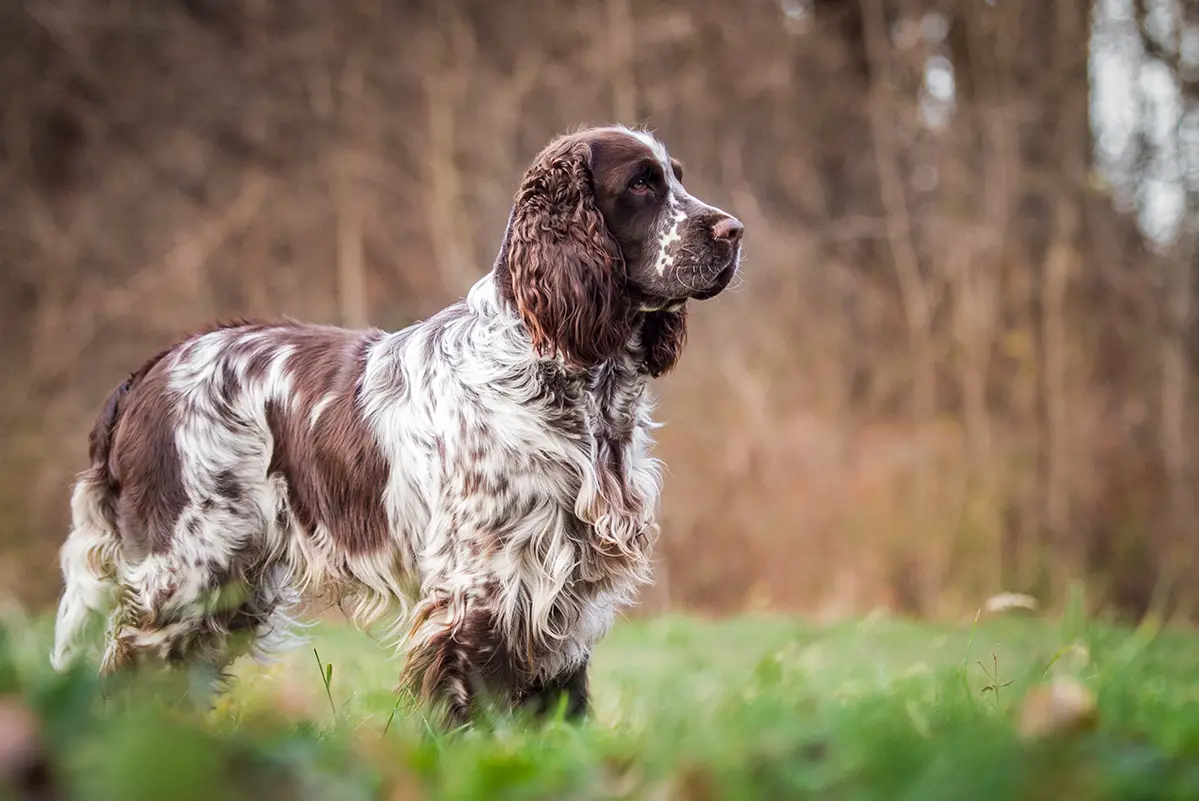
Most spaniels have a desire-to-please disposition, and the English Springer Spaniel is no exception. Springers are happy and affectionate dogs who adore their families and prefer to be near to them. They are also wonderful household pets, but they need daily exercise and must be brushed and trimmed on a regular basis to keep their coats tidy and mat-free.
Labrador
Retriever
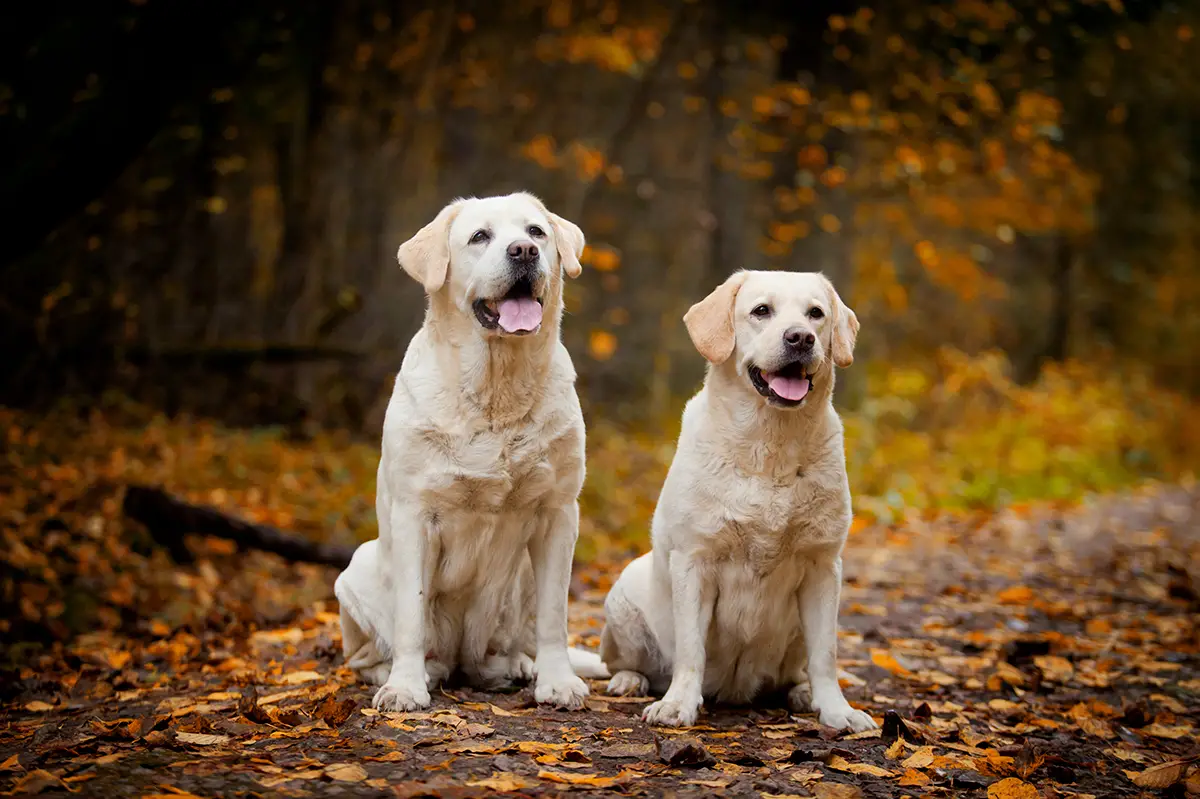
The Labrador Retriever is a devoted and caring dog and one of the most popular and recognized medium-large dog breeds. They thrive in busy, fun, and intelligent homes where they can get enough training, exercise, and attention. Labs may misbehave when bored, particularly puppies, because of their high activity levels, but they react well to training and positive feedback.
Papillon
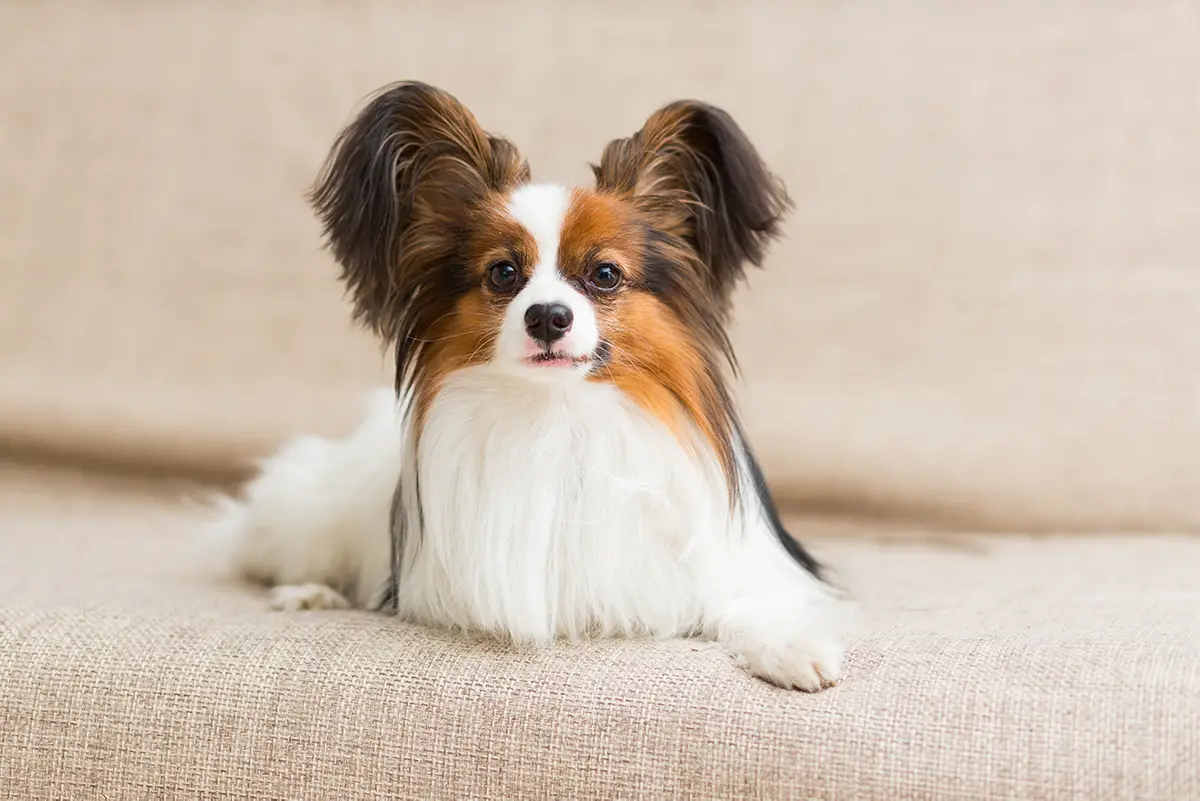
The Papillon is a miniature, sweet-tempered toy dog with a beautiful bone structure. This little dog is reputed to be a cheerful, alert, bold, and non-aggressive breed. Papillons are a happy dog breed that can live cheerfully anywhere, including apartments, in the country, or anywhere else. In addition, they enjoy playing outside, but you can easily entertain and exercise them indoors as well.
Bichon Frise
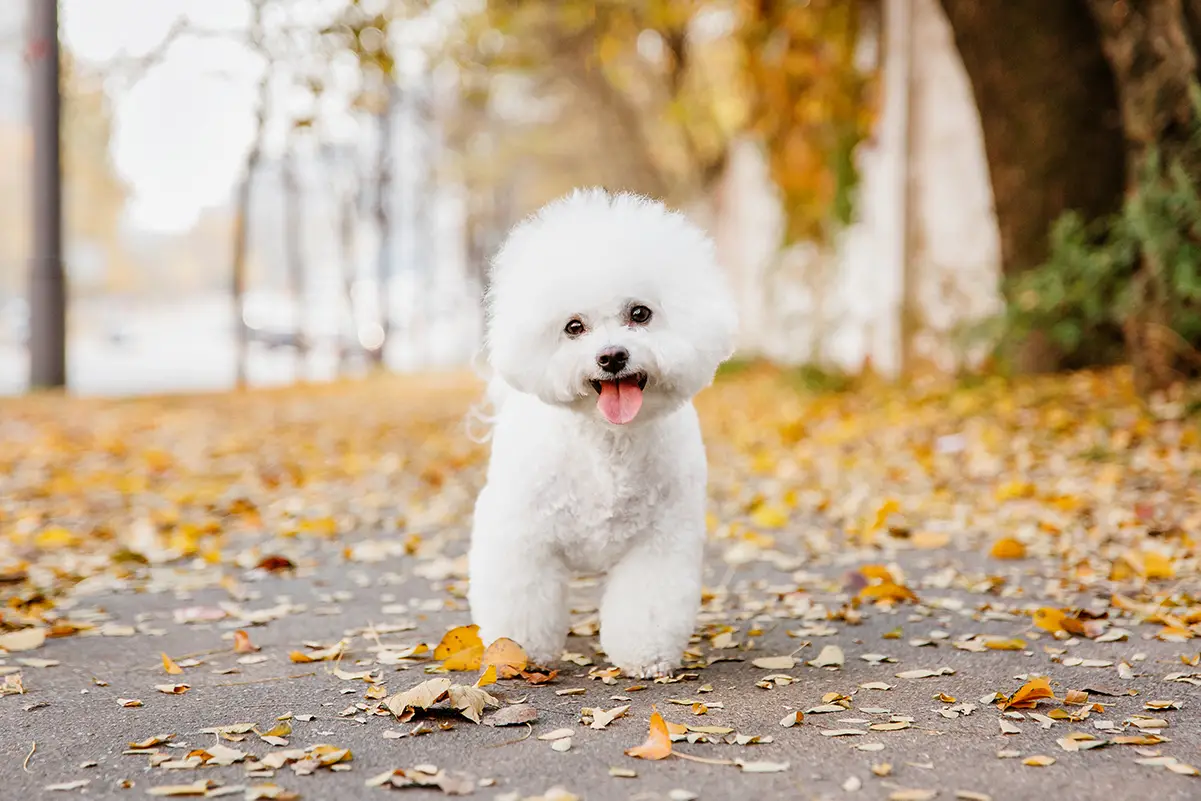
This breed gets along well with kids of all ages and other family pets. Their hypoallergenic coat makes them ideal dogs for people suffering from allergies. Bichon Frises love human companionship and are relatively easy to train due to their affectionate and attentive disposition. They may be wary of people at first, but early socialization will help them develop into friendly, playful puppies.
Poodle
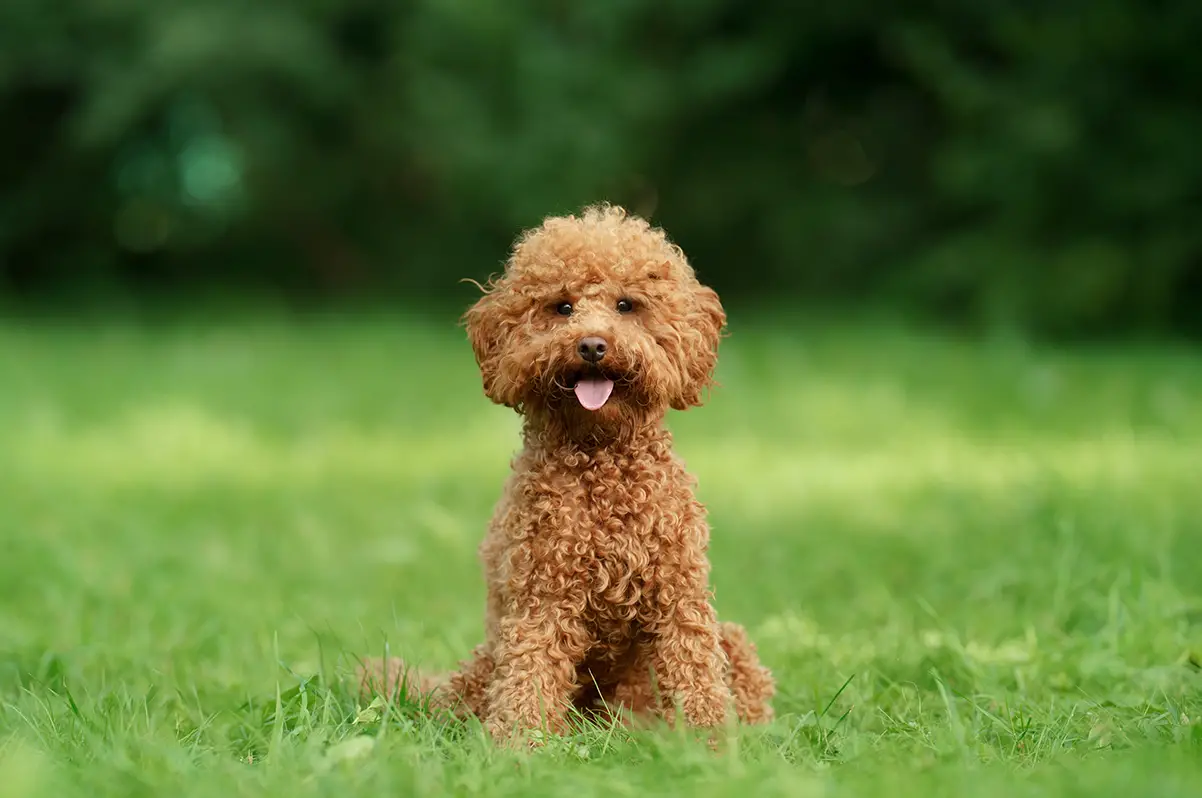
The Poodle is an intelligent breed that thrives in a variety of dog sports. According to AKC Registration Statistics, Poodles come in three sizes, which may explain why the breed is one of the most popular dogs. The Poodle can live in almost any size of living space. Its hypoallergenic coat may help decrease allergy reactions, but it necessitates grooming to stay maintained.
Shih Tzu
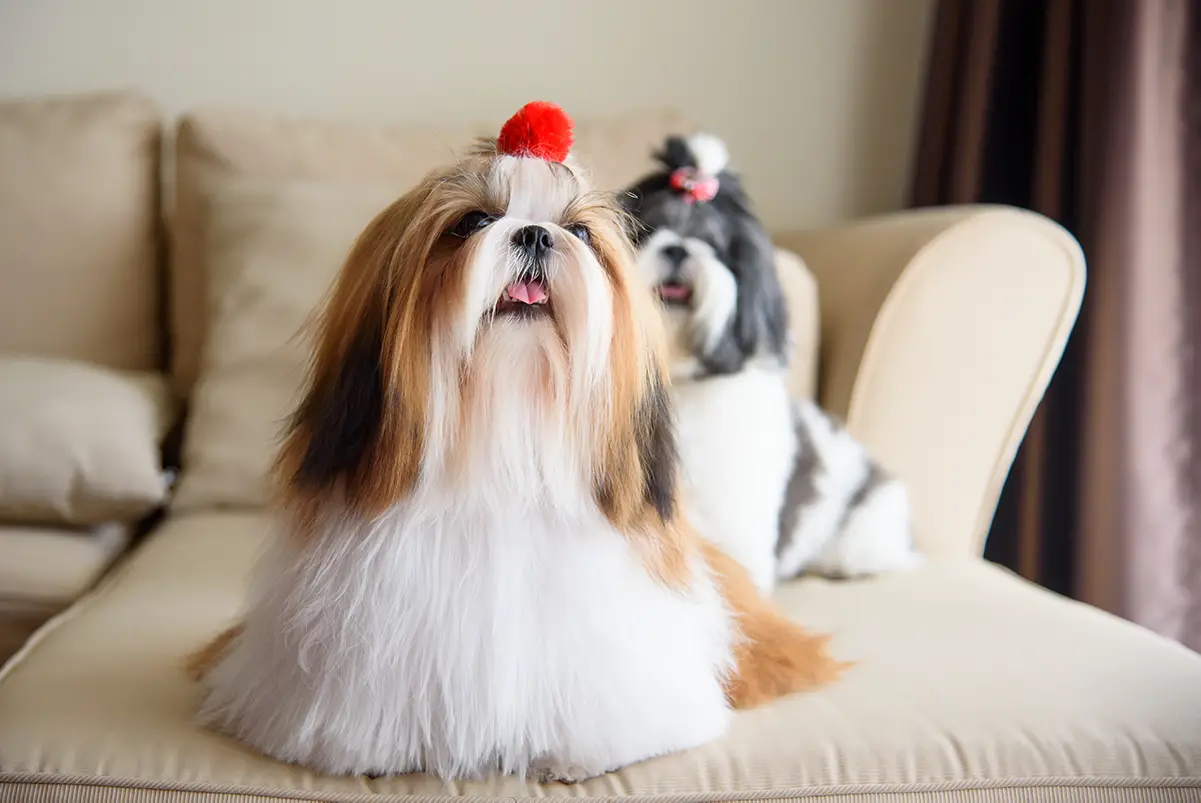
A Shih Tzu is a good choice for your first dog if you need a dog with a lot of distinct personalities. They love playing but are gentle, friendly, joyful, develop strong emotional attachments to their guardians, and are relatively easy to train. They make wonderful family pets and get along with other pets and even children, as long as the kids understand how to handle and play with a little puppy gently. Shih Tzu doesn't need much activity, and its long, luscious coat can be clipped into a "puppy cut" to make grooming easier.
Wheaten Terrier
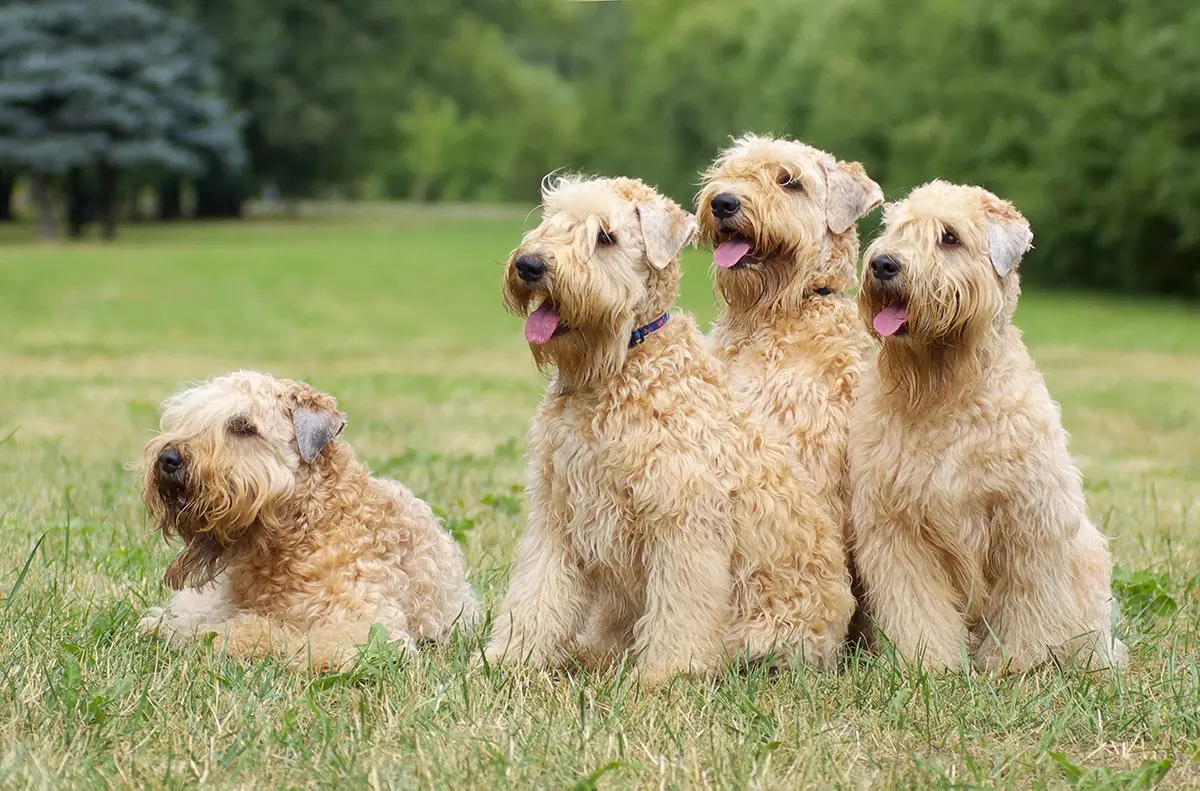
The Wheaten is a medium-sized dog breed that is always happy, calm, self-confident, and conscious of its environment. Wheatens are much less scrappy compared to other terrier breeds; however, they are real terriers and will be much more active than most other breeds, enjoying lots of daily exercises. They have a good rapport with children and can easily acclimatize to life in the city, the country, and the suburbs. This breed is single-coated and sheds very little, but grooming is required on a regular basis to keep the coat free from mats.
Whippet
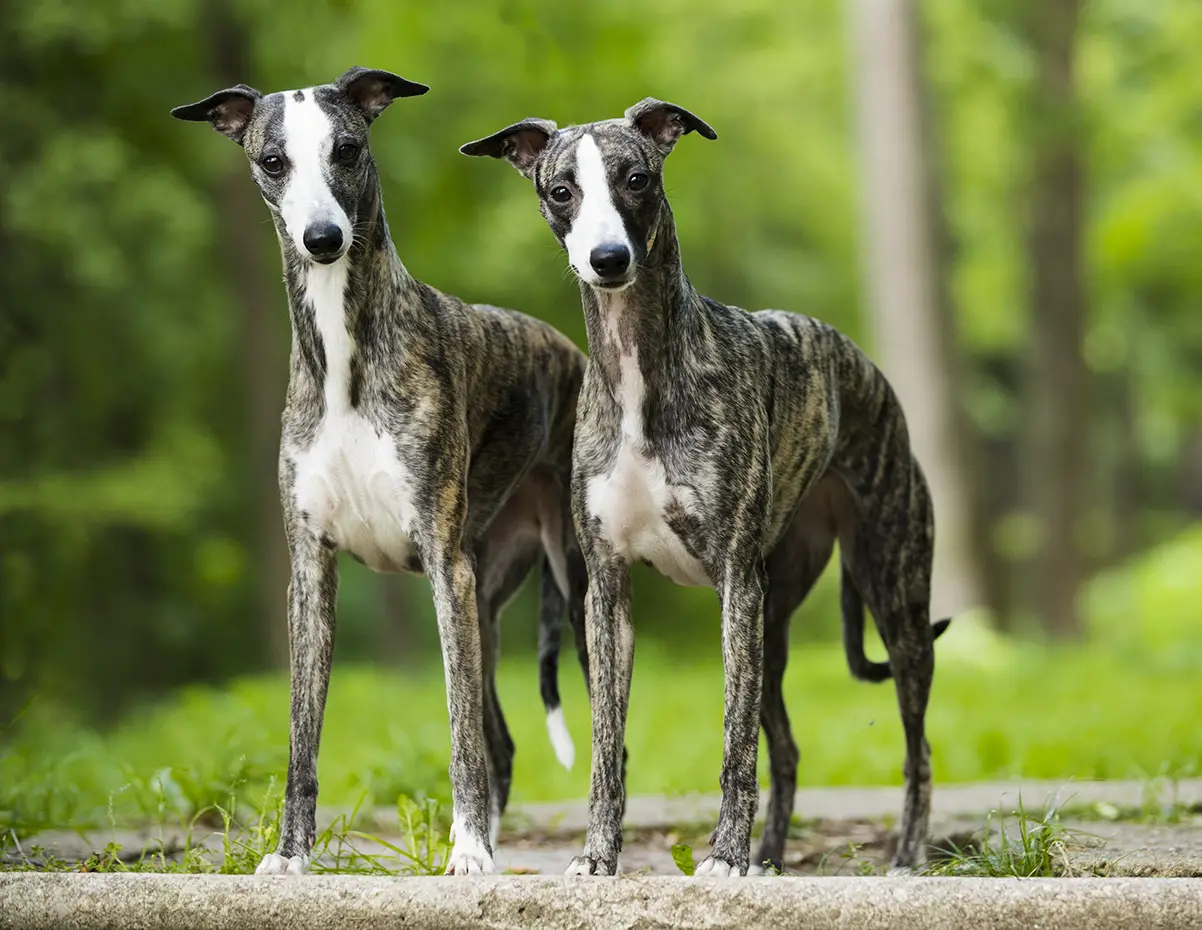
Despite their fondness for running, Whippets are wonderful house dogs. You will see them staying quiet while hanging out at home in the living room but sleeping for most of the day. In addition, Whippets are the happiest when kept as house pets because of their natural bond to people. The breed gets along well with well-behaved children and is friendly to visitors too.
A guide to buying a suitable dog
One of the most exciting and rewarding things you will ever have is bringing a dog into your life and home. So, if you're confident about your readiness to bring home a new pet dog, then follow our expert step-by-step dog buying guide, and you'll be well on your way to welcoming a happy, healthy, loving dog into your life and family.
Choosing between an adult and a puppy dog
You need to give careful thought to what you want; is it a puppy or an adult dog? Although puppies generate lots of mess and require a lot of care and training, that adorable puppy will grow up in no time to be an adult dog. It would be best if you thought about your need for the dog you want to make an informed decision whether to go for a puppy or an adult dog.
So, if your preference is a puppy dog, many responsible breeders out there have puppies they want to sell. If you want an adult dog, you will find a wide range of good breeds available at rescue centers that will make fantastic pets.
Research to learn about the dog breed
Do thorough research about the breed or type of dog you choose because some breed-specific genetic ailments can affect even breeds without severe physical traits. These diseases vary in severity and frequency according to the breed.
To be on the safe side, consult your nearest veterinary practice for information on breed-related health, lifestyle requirements, and temperament compatibility for your lifestyle. For more detail, go to the website of the respective breed organization, but keep in mind that the quality and information about health problems will differ.
As a puppy buyer, it is important you request Breed Health and Conservation Plans (BHCPs), written collaboratively by breed organizations and the Kennel Club from the breed club. The BHCP contains information about particular health problems in their breed, which will help you ascertain what kind of ailment is peculiar to the breed you intend to purchase.
Additionally, you can visit the Dog Breed Health website: www.dogbreedhealth.com to check the health details of the breed on the Breed Health Information Pages.
Ensure the dog you choose is a good fit for your lifestyle.
Choosing a dog that perfectly fits your lifestyle is critical, as the varied dog breeds require different amounts of exercise, activity, and attention. Some canines are better suited to city life or households without a garden than others. For example, some huge dogs, as well as many working dogs, are not well adapted to city life.
In all, no dog, no matter the temperament, should be left alone or without human interaction for more than a few hours. Irrespective of their breed difference, all dogs require love, training, exercise, grooming, and cerebral stimulation.
Duty of care
Keep in mind that under the Animal Welfare Act (AWA) 2006, every potential dog owner has a "duty of care" for their dog. According to the Animal Welfare Act, you must guarantee that you can meet the dog needs for:
- Suitable diet
- Suitable environment
- Protection against suffering, pain, and disease
- Being housed with, or apart from, other pets
- Exhibiting normal behavior
Avoid extreme sizes and shapes
Consider your options carefully before picking a huge breed, as they have shorter life spans and are more susceptible to cancer, joint issues, heart problems, and other health concerns as a result of their enormous size. They are also incredibly costly to maintain and care for. Likewise, miniature or "handbag" dog breeds are also to be avoided because they are prone to orthopaedic and spinal issues, poor teeth, and hydrocephalus.
Additionally, avoid breeds with the following health problems:
- Inordinately short legs (dwarfism)
- Extreme folds of skin, which are vulnerable to infection
- Long ears which can be painful if stepped upon
- Excessive hair, which is inconvenient for the dog and challenging to groom
- Poor eyelid anatomy, which can lead to weepy and sore eyes
- Inordinately long backs, which is susceptible to disc issues
- Huge heads
- Flat-faced dog breeds (brachycephalic), which are prone to difficulties in breathing, easily overheat, and commonly have a soft palate and other airway abnormalities that may necessitate surgery.
All of these features make it difficult for a dog to live a good quality of life.
Consider using the Puppy Contract
You should strongly consider purchasing a puppy from a breeder who utilizes (or is willing to use) the Puppy Contract, consisting of a Contract for Sale and a Puppy Information Pack (PIP). You can visit the American Kennel Club website for more information.
Find a responsible licensed breeder
It is somewhat difficult to find a responsible breeder; however, it is well worth the time and effort it takes.
Lots of potential puppy buyers may look for puppies online because it is the most convenient alternative, but this should be done with caution. The ultimate rule is to visit the breeder's home to see the puppies with their biological mother at least twice. In addition, avoid buying a puppy from a third party, or from someone you meet at a motorway service, or accept a puppy shipment to your home.
Whether you pick a purebred/pedigree or crossbreed puppy, it is important to obtain DNA testing information and health screening about both parents.
One way to find a decent puppy is to contact your chosen breed's national breed club and make enquiries about existing litters of puppies. Don't presume that a crossbreed is naturally healthier than a purebred dog; nevertheless, the first-generation cross with both parents health-screened may indeed be.
So, before making a decision, you need to visit two or more breeders and use the initial visit as a fact-finding mission. Avoid yielding to their persuasion such as 'If you don't get it now, it might not be here tomorrow.'
See the pedigree of the puppies
Before deciding to purchase a pedigree dog, request to see the dog's five-generation pedigree certificate. If the same name showed up in the pedigree multiple times, it indicates a high degree of inbreeding.
Also, inquire about the puppies' coefficient of inbreeding (COI) and contrast it to the breed average COI. You can view this on the website of the Kennel Club or the breed pages of the Dog Breed Health website. (See 'A Beginners Guide to COI' for more information.
See the health screening certificates
Verify that the breeder has completed all necessary health screenings on your puppy's parents. Ask to examine the required paperwork to prove that your dog's parents are fit and healthy to breed. You can visit the AKC Canine Health Foundation (AKC CHF), Canine Health Information Center (CHIC) to see what a real certificate looks like and learn when a dog should be tested and retested.
Before you go to see the puppies, it's a good idea to look over this paperwork because once you've seen a puppy, it's all too easy to let your heart rule your intellect.
Furthermore, if a breeder has yet to perform all the necessary health tests, you can inquire why they have not done so. You can check the breed information page of www.dogbreedhealth.com to learn more about a particular health screening and DNA test.
The American Kennel Club's website, https://www.akc.org/, is also worth a look.
Inquire about EBVs (Estimated Breeding Values) for Hip Dysplasia (HD) and Elbow Dysplasia (ED) from the breeder.
Elbow Dysplasia (ED) and Hip Dysplasia (HD) are painful elbows and hip joint disorders that affect varieties of medium-sized to large dog breeds. Most dog breeds suffer from both or one of these diseases, while some are free from it. EBVs are a more current and precise technique for determining the hereditary risk of an animal transferring complex illness genes to its offspring.
EBVs are determined using pedigree data and the outcomes of the HD and ED Canine Health Schemes. An EBV can either be a negative(-) or positive(+) number with the breed average set to zero. While a positive number means a higher than average risk of illness, a negative number indicates that the genetic risk of a litter of puppies is lower than the breed average.
Elbow and hip Dysplasia is a terrible disease that can cause a dog to be uncomfortable and disabled for the rest of its life. As a prospective puppy buyer, understanding which questions to ask a breeder can help minimize the occurrence and severity of these illnesses.
Ensure you see the puppies with either or both of the parent (preferably the mother)
We strongly advise that you make sure to see the puppies associating with their mother and in a healthy household environment where they have been adequately socialized with humans as well as other animals. Do not accept a puppy that has been removed from its mother before the age of eight weeks.
The breeder should also demonstrate that the comfort and welfare of the mother are of the utmost importance. In addition, it is also essential that you meet the father of your puppy to ensure that its disposition (as well as the mother) is okay.
Puppies should, however, be exposed to humans many times a day from birth and should be taken into the house for a few hours regularly from around five weeks. Also, puppies ought to be exposed to a wide range of household sounds from a young age (loud music, vacuum cleaner, thunder and fireworks, noisy children, and more). Responsible breeders will have exposed their puppies to the different sounds around the household environment.
Furthermore, puppies ought to be exposed to children and cats in a timely manner so that they are not afraid of them later in life.
Healthy puppies ought to be playful at all times and eat properly as well. So, when seeing them for the first time, ensure you can observe this disposition. In addition, also check that the eyes are sharp and vibrant, there is no diarrhea, and that the coat is neat.
A reputable breeder will assist you in selecting a puppy whose temperament is a good fit for your lifestyle and family. Besides, before deciding on a puppy, visit multiple breeders and litters to avoid making a hasty decision. Notify each breeder that you're going to do this.
Vaccinations and a visit to the veterinarian
It's critical that a veterinarian examine your puppy for any noticeable deformities or health issues. However, a responsible breed would have already done this beforehand. They will also make sure your puppy has received its first series of vaccines against the varieties of disease; inoculation( from around the age of 8 weeks).
Microchip
Before a puppy is sold to a new owner, the breeder is required by law to microchip it at the age of eight weeks. The breeder should be listed on the microchip as the first owner; however, after purchase, the microchip information must be re-registered under the owner's name.
Note that the breeder's information must be kept on the microchip database so that traceability and responsibility may be established at any moment in the future.
Expect questions about your home and lifestyle from the breeder
Expect a lot of questions from the breeder as they need to know if your home would be appropriate for one of their puppies. It would be a sign of irresponsibility and carelessness if they failed to ask you questions concerning your home and lifestyle
A responsible breeder would volunteer to help you with whatever thing you need in the future. They will also be willing to take the puppy back regardless of the issue and offer to re-home any dog they have bred at any age.
A good breeder should ideally visit your household to ensure that it fits the breed in consideration. If this isn't possible, they should request photos of your household. If you have a garden, you must ensure that it is protected and that your dog will be unable to escape.
Inquire about the breeder's policies
Ask for the breeder's policy on any health issues that may appear in a puppy shortly after purchase, as well as genetic issues that may spring up later. A reputable breeder will request to be updated about all pertinent health conditions and factor these into future breeding practices. You can also check to see if the puppies come with complimentary temporary pet insurance.
Which breeds are the best loyal family dogs?
Most people regard their dogs as members of their families. However, when children are present in the house, careful consideration ought to be given to choosing the perfect dog for your personality, living space, and children's ages. While some breeds are better with older kids, others are as well patient with smaller children.
In addition, some breeds thrive in cities, while others require more space. But whatever may be the case, you will want a dog that is friendly, outgoing, as well as caring and affectionate toward the entire family.
The following are a few dog breeds that will make a wonderful, loyal family pet.
Airedale Terrier
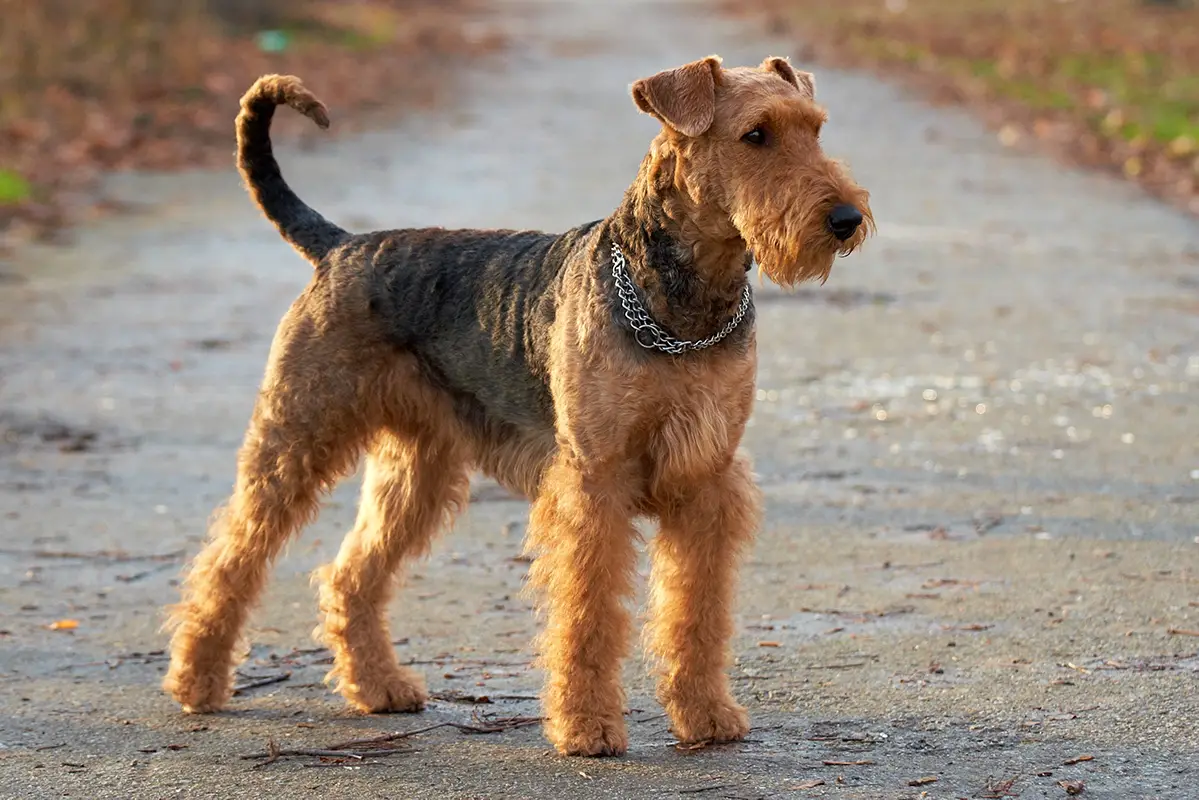
Airedale, the largest of the terriers, is a very clever, loyal, lovable, intelligent dog with lots of personalities. They are excellent family pets since they are kind with children, enjoy romping and playing, but are fiercely protective of their household.
Alaskan Malamute
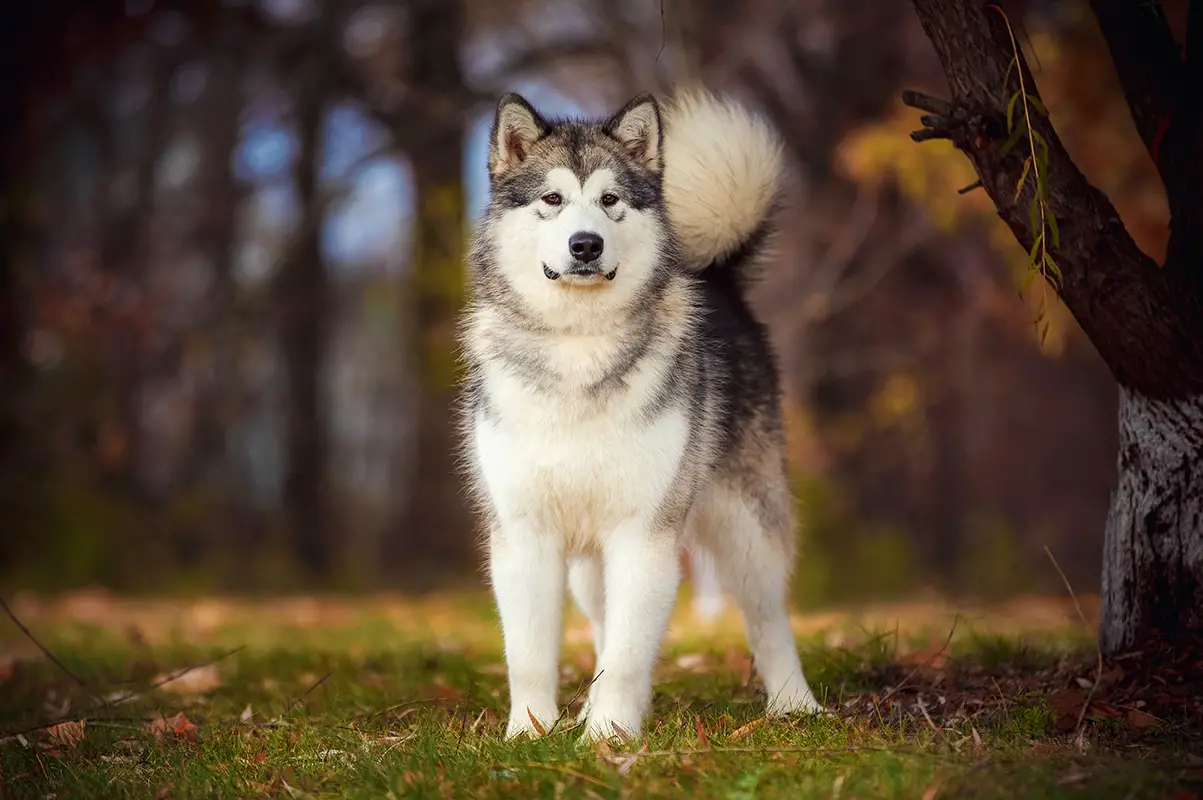
Malamutes, make excellent pet dogs and get along well with children and enjoy the attention they get from them. However, because of their huge size and high energy, they can easily dominate small children, but they are perfect for homes with children over 5.
American Eskimo Dog
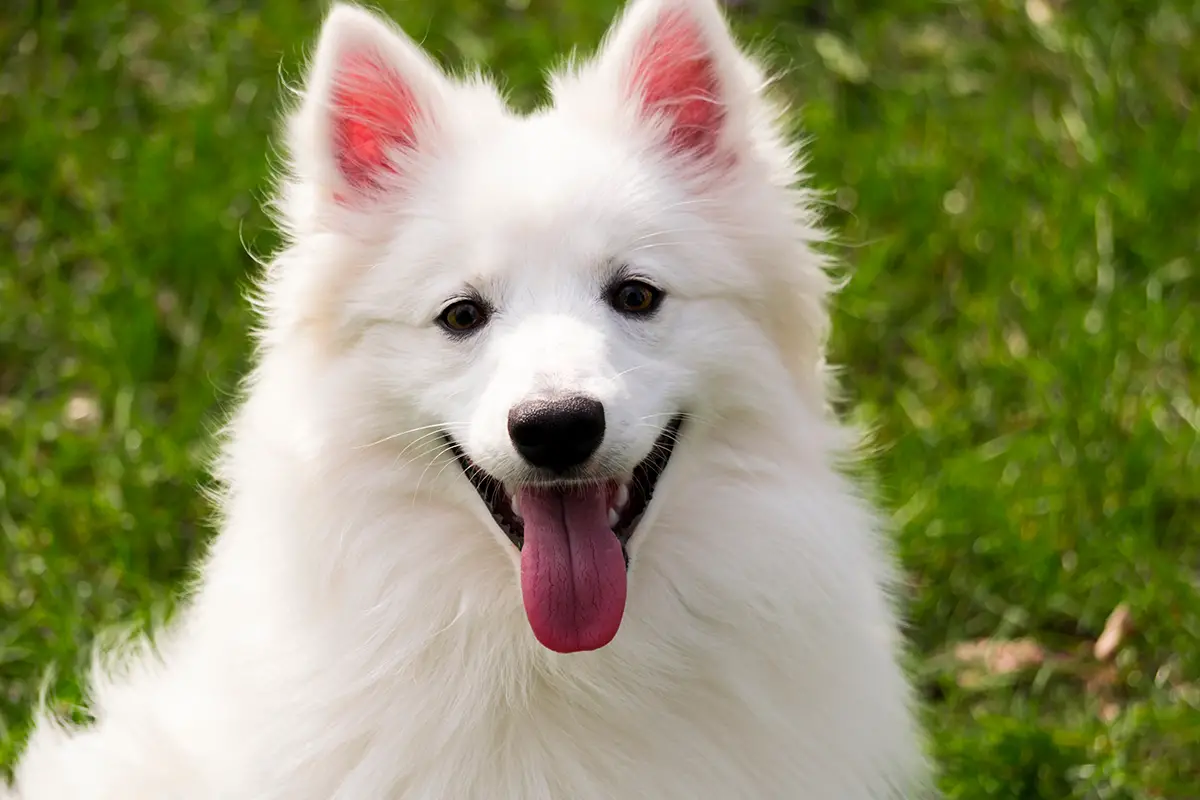
The American Eskimo dogs are active, enthusiastic companion dogs who enjoy entertaining their owners and participating in family activities. When it comes to family and friends, they're outgoing and friendly but hesitant towards strangers.
Bernese Mountain Dog
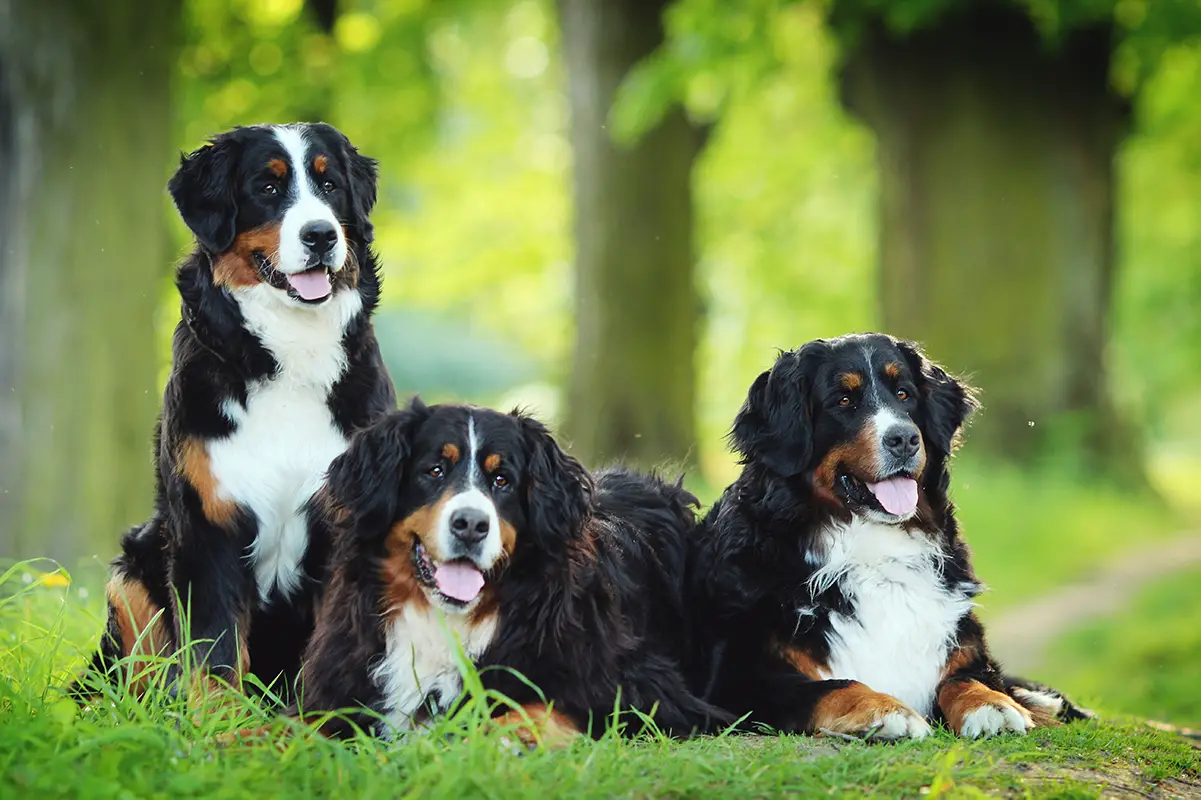
Bernese Mountain Dogs are known for being extremely good-natured and affectionate, usually regarded as one of the least aggressive dogs toward humans. Their gentle, placid demeanors, and eagerness to play make them excellent companions for families with children.
Beagle
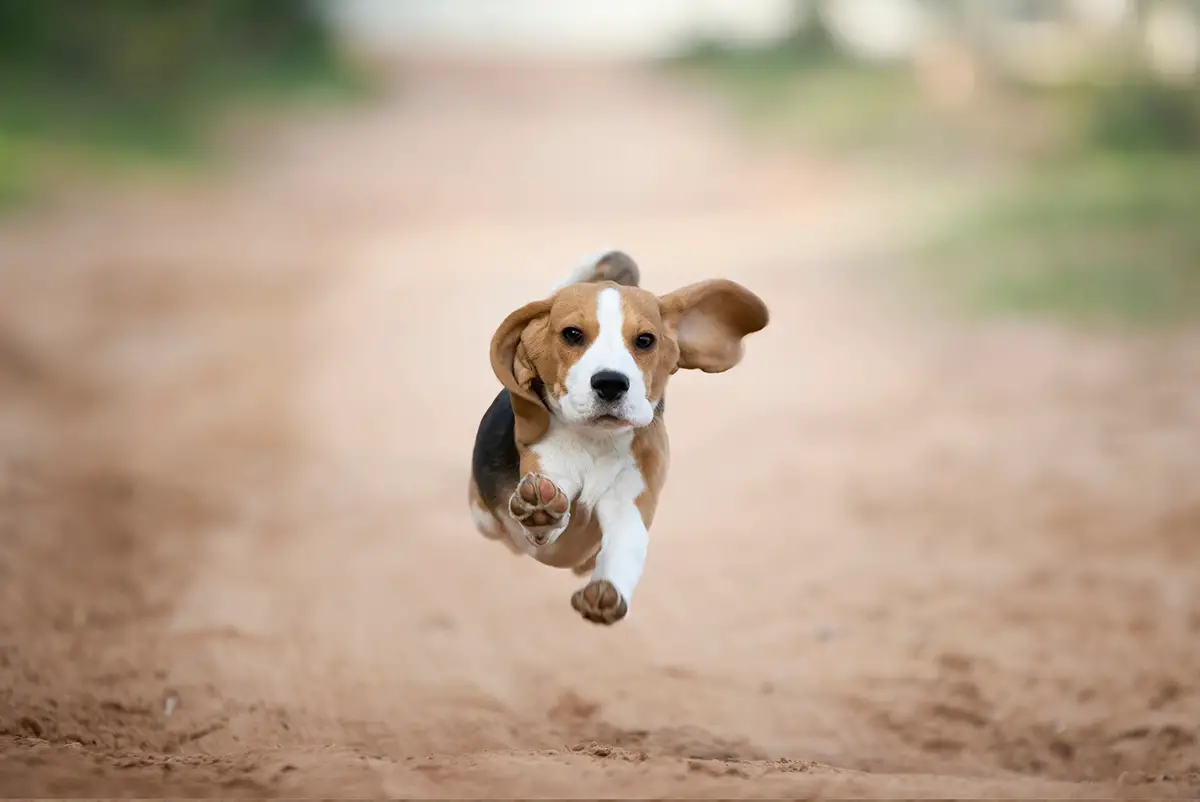
According to the National Beagle Club of America, Beagles make wonderful family companions. Beagles are great family dogs since they are amiable, playful, and enjoy being around people. They are one of the greatest dog breeds for children because of their friendly and gentle disposition. Their calm demeanor enables them to fit with most lifestyles.
French Bulldog

The French bulldog is an excellent companion for many types of households since it is adorable and friendly. They are quick to adapt to their surroundings, have endearing personalities, and get along well with children and other pets. Their small size enables them to fit into smaller homes, yet they are more sturdy than the usual.
American Leopard Hound
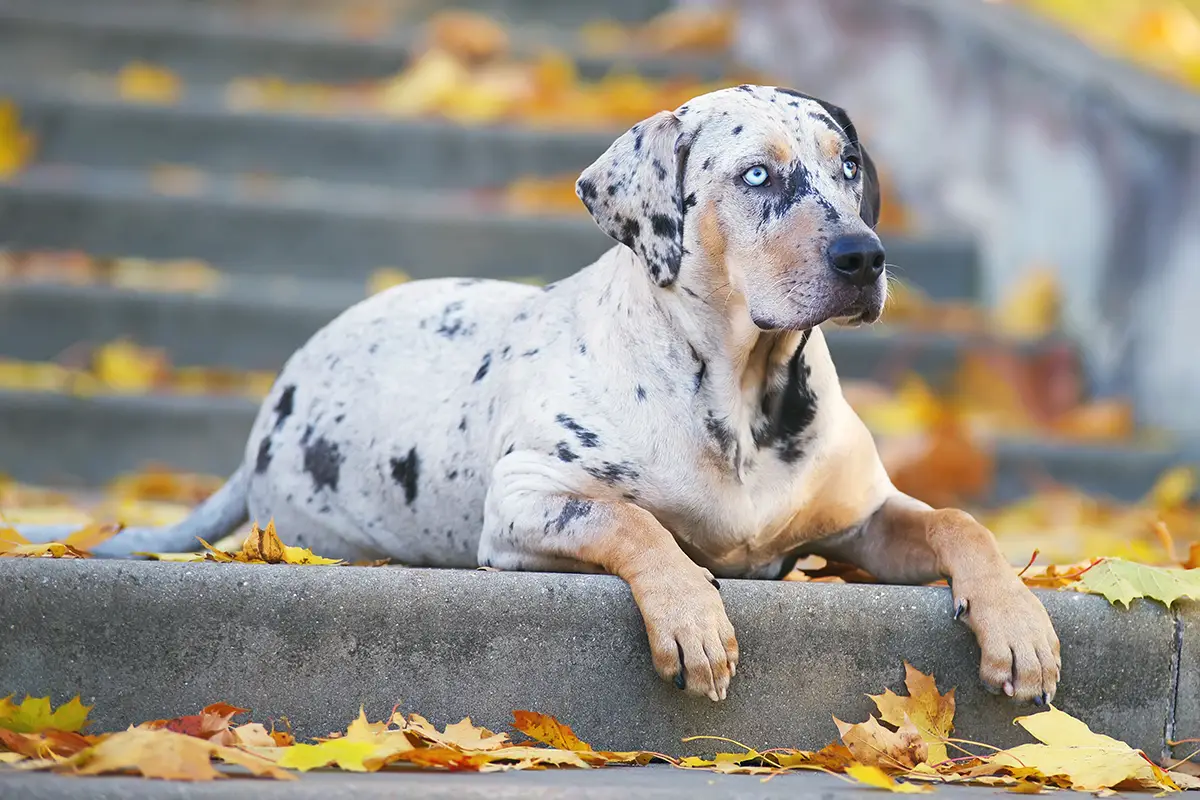
The American Leopard Hounds are particularly protective of kids and are kind and loving toward their families. They make excellent companions and can also serve as home guardians. However, to prevent any undesired habits, early training is greatly required.
American Staffordshire Terrier
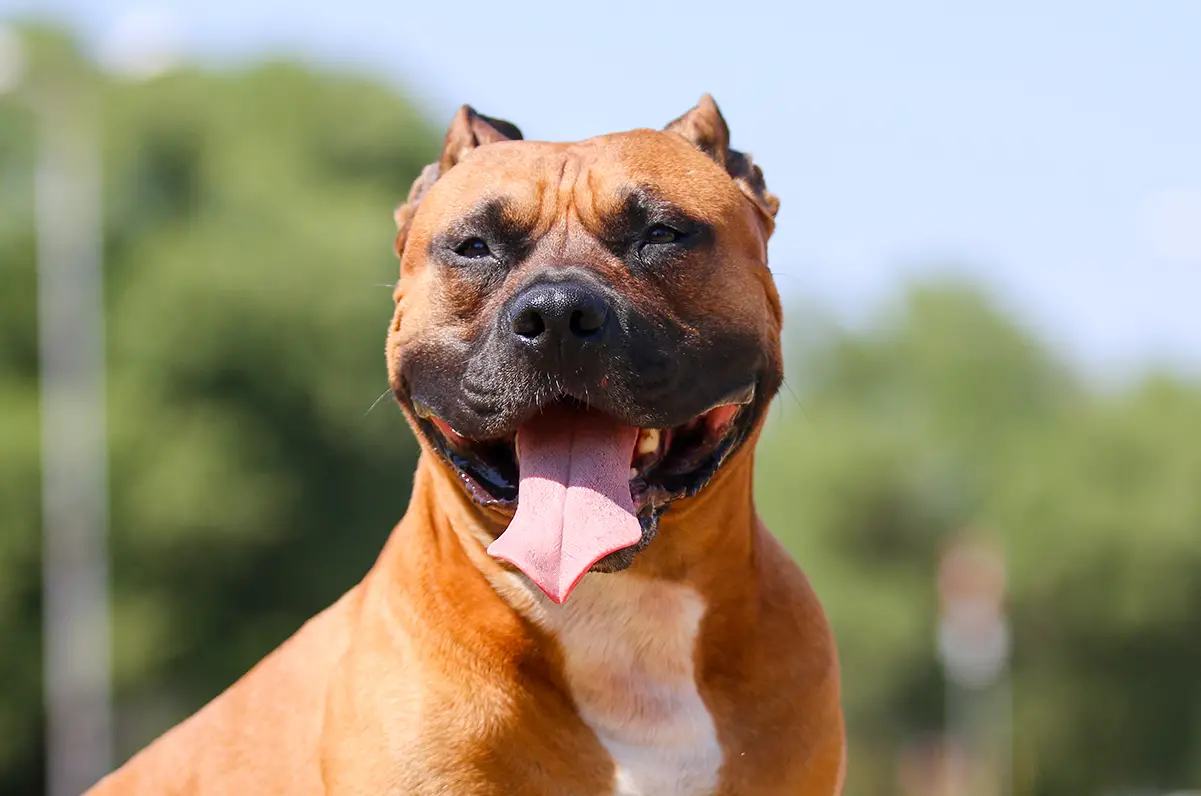
The American Staffordshire Terrier is a wonderful family companion since it is friendly, loyal, and gentle with children. They are affectionate and kind with human family members, and nothing makes them happier than being with the people they care about, whether they are out for a jog or not. American Staffordshire Terriers are ideally suited to families with children older than six years old.
Golden Retriever
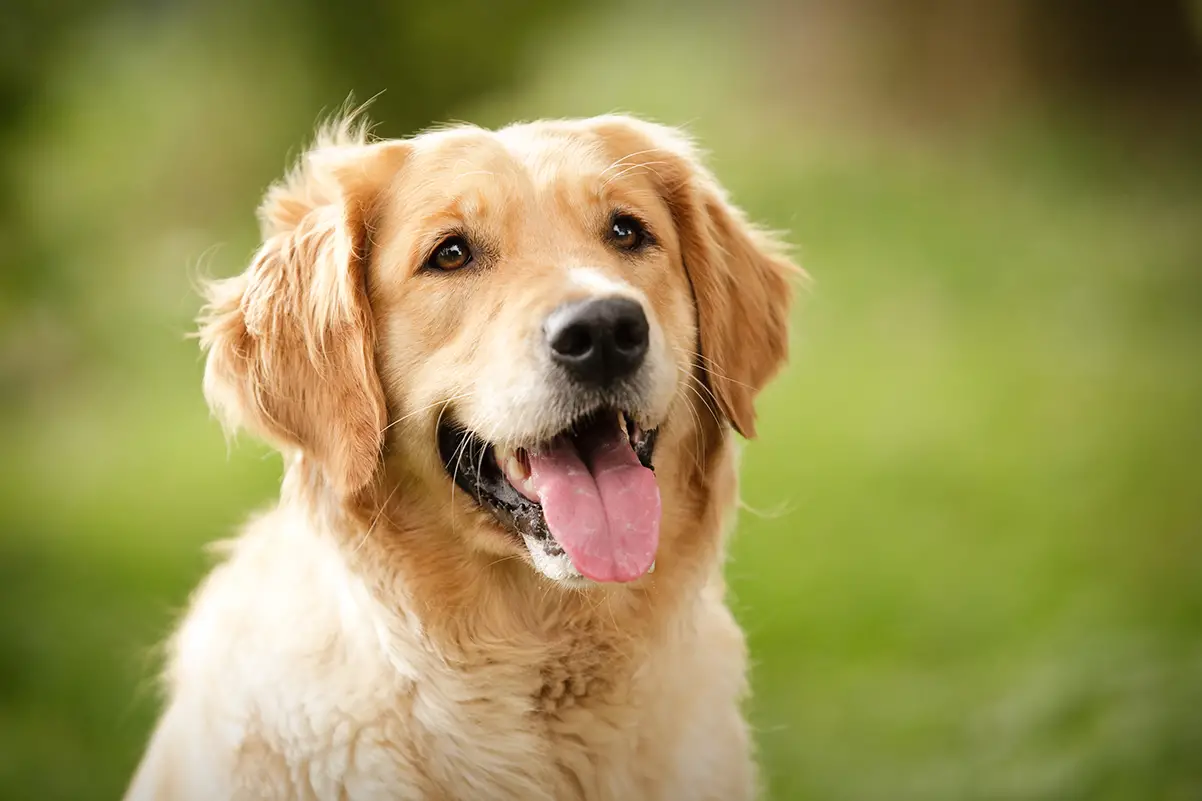
Golden retrievers are one of the gentlest and most loving dog breeds, with a strong desire to impress their owners. Goldens are known for their warm, friendly demeanor and widespread reputation as "man's best friend," They have an extraordinary capacity to adjust their energy level to almost any environment.
Bichon Frise
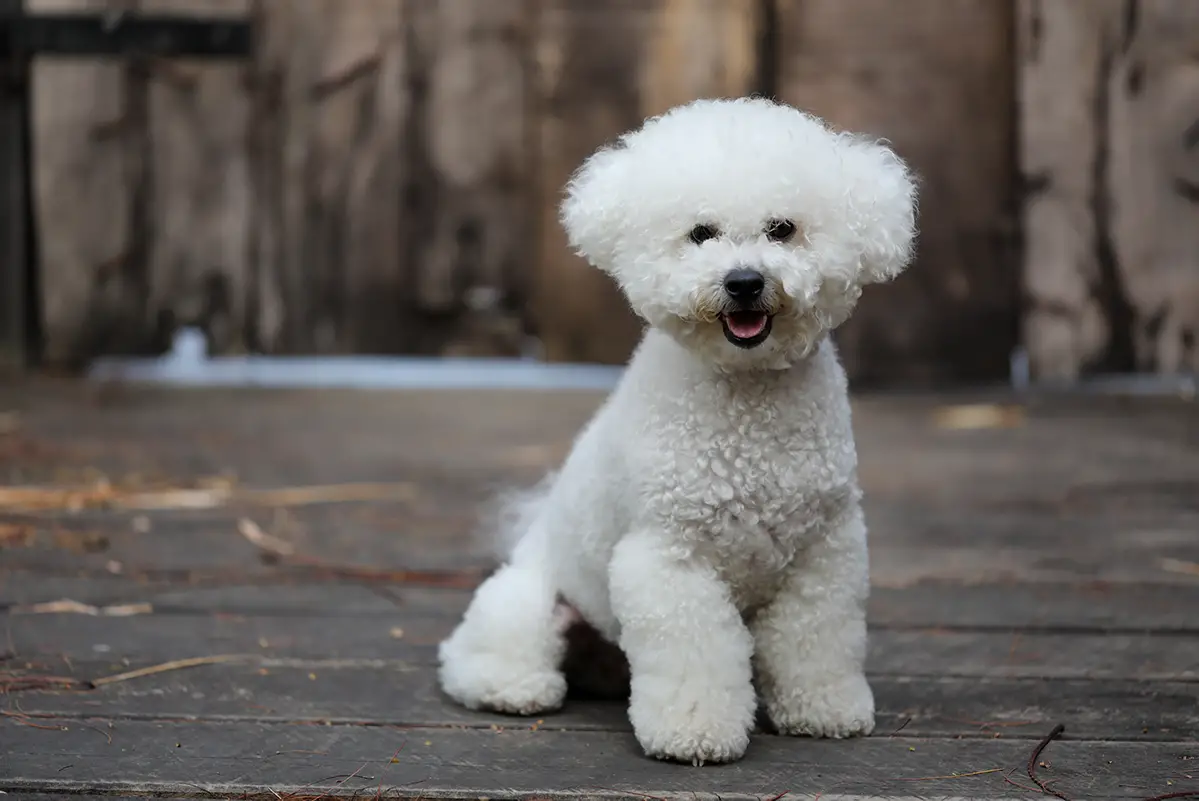
The Bichon Frise is an excellent family dog as it is affectionate, caring, and constantly eager to please its owners. They are often seen to be excellent with children. These dogs have earned a reputation for offering good company as well as a great deal of amusement for their owners. Bichons are very playful and affectionate and enjoy spending time with their human family and building close bonds with them. This breed enjoys being hugged, kissed, and cuddled by everyone, which makes them ideal pets for families with little children.
Biewer Terrier
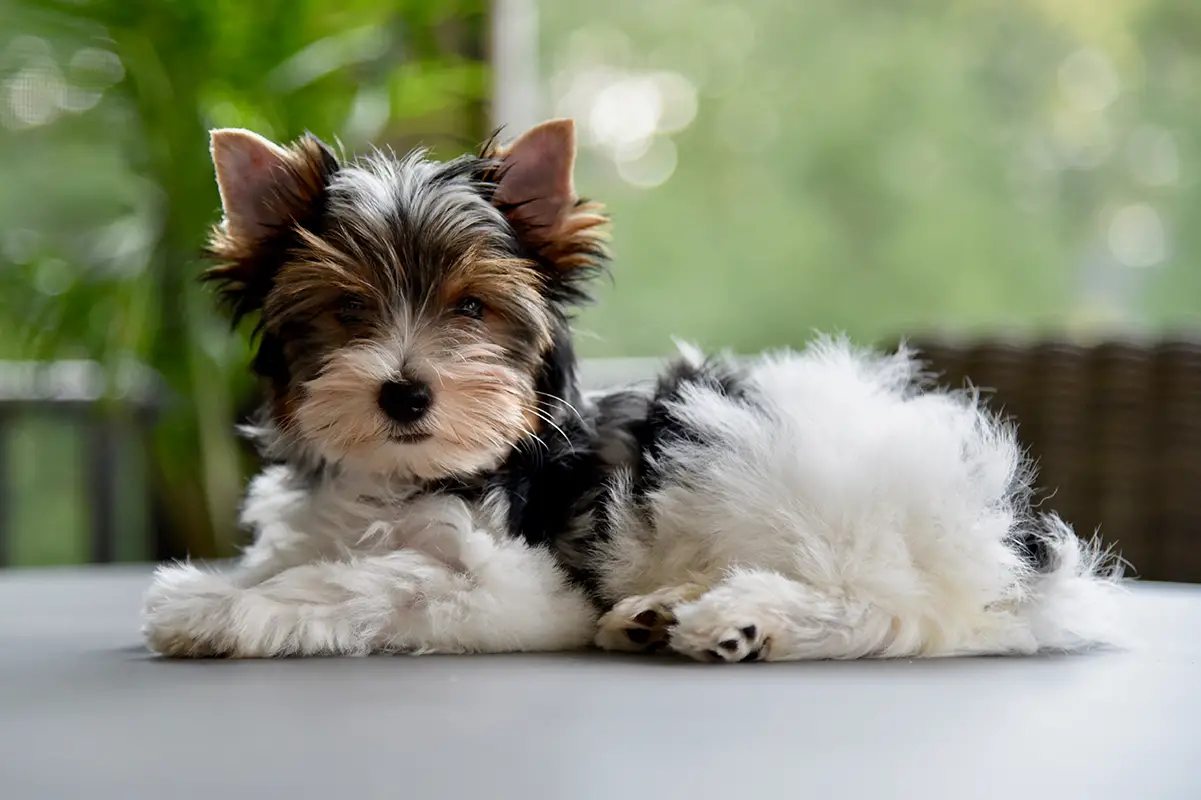
Some of the most admirable traits of these dogs are that they are friendly, playful, and lively. Biewer Terriers make excellent companion dogs for families and also get along well with kids and other animals. In contrast, they can be energetic and boisterous, notably around strangers and dogs they are unfamiliar with.
Labrador Retriever
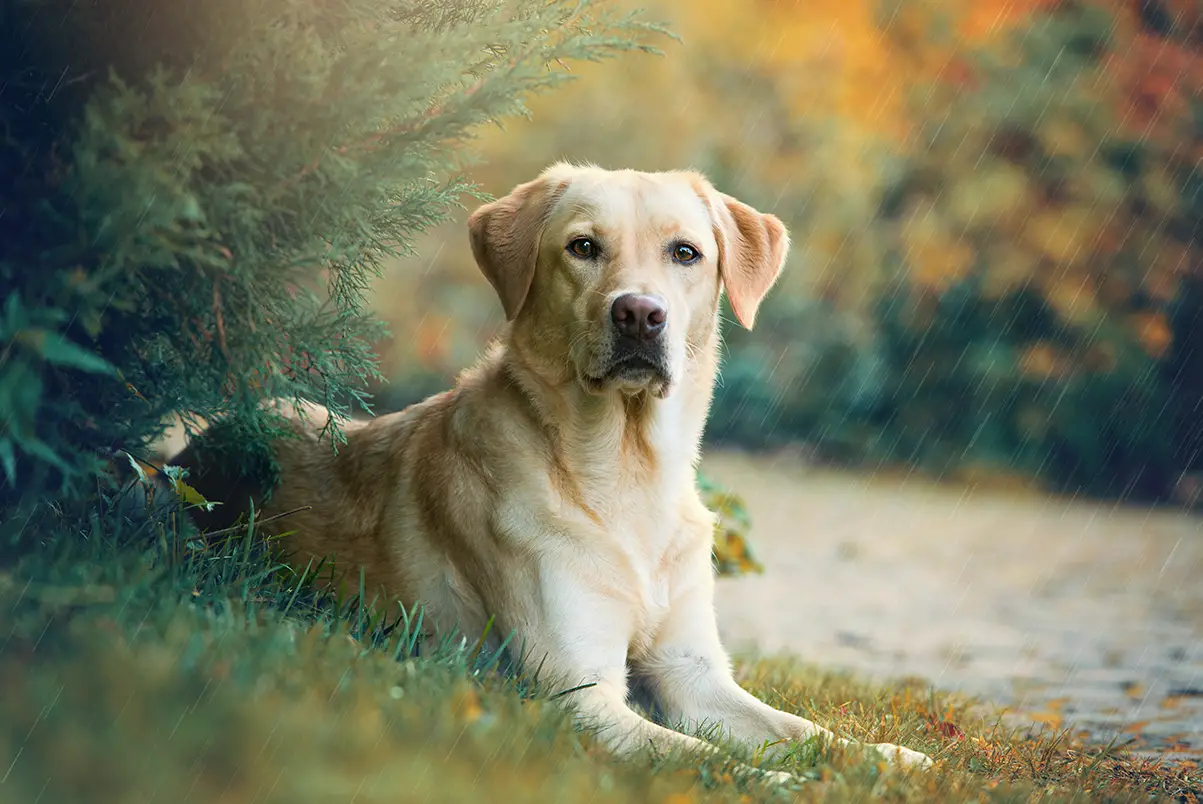
The Labrador Retriever makes an excellent family pet and is generally regarded as one of the greatest dog breeds for children. Labs tend to be friendly, enthusiastic, kindly, good-natured, playful, even-tempered, and highly trainable. Nevertheless, they can also be quite lively, bouncy, and need lots of exercise. Labrador retrievers may be taught to play softly with small children and make good hunting companions.
How to Groom a Dog at Home?
Taking your dog to the groomer may no longer be an option since you feel safer keeping your dog at home. Many things have changed since 2020: we don't meet people as often, we don't high-five everyone, and now it is recommended that you know how to groom your family pet dogs professionally!
If your dog's coat is beginning to look like an old, faded coat that was taken out of a dustbin, it's time to start working on dog grooming skills!
The best part is that, depending on your dog's grooming requirements (and temperament), doing it yourself, at least for the time being, can be fairly simple than you think!
Your dog will look and feel better if it is well groomed. Regular grooming sessions enable you to inspect your dog's coat, nails, ears, teeth, and eyes for symptoms of abnormalities. However, the frequency with which you should groom your dog is determined on its breed, size, and coat type.
While excellent hygiene habits are important for a healthy dog, most dogs, unlike people, do not require routine cleanliness and grooming practices. The breed determines what is necessary and how often it is required. For example, frequent grooming is necessitated for breeds like the Poodle, Afghan Hound, Komondor, and to mention a few, whereas types like the Boxer, Beagle, and Weimaraner, have more grooming freedom.
Hygiene like brushing, nail clipping, teeth brushing, ear cleaning, and brushing are all important aspects of regular dog care, no matter what breed they are. And this is something you can easily do adequately right in your home.
You can learn about dog grooming from the various canine club’s websites; nevertheless, your dog's breeder is one of the best sources where you can learn lots of things about your dog's grooming needs. An AKC good breeder will typically have a plethora of knowledge on all aspects of their breed, such as grooming advice and the tools required to do it all.
Brushing at Home
A few weekly brushing sessions will keep a typical dog tidy; however, daily care is even better. When brushing, get the brush down to the skin to allow the massaging action to get rid of flakes of dandruff and stimulate the circulation of blood.
However, the type of tool you'll need is determined by the texture and length of your dog's coat. For example, pin brushes with long, round-ended stainless-steel (or chrome-plated pins) are required for longhaired dogs whereas bristle brushes are required for short, medium, and long coated breeds.
There are also other tools available for your dog brushing needs. They include curry combs for removing dead hair and polishing smooth coats, slicker brushes to remove dead hair and mats, hair dryers, clippers, stripping knives, rakes, etc.
Always look for burrs and other hard organic material when brushing, as well as mats(which commonly form under the legs and behind the ears), and any scratches or cuts on the skin.
In all sincerity, if you observe matted hair, you should fix it right away as matting decreases air circulation and can cause serious medical issues in puppies of all ages, including dermatitis, inflamed lesions, decreased blood supply, and strangulating wounds.
All dogs shed, but some shed far more than others, so brushing on a regular basis will assist to keep shedding to the barest minimum.
Therefore, brush your dog's hair at least a few times a week to keep it looking neat always. Brushing your dog's coat everyday will help keep it detangle and smooth if it has curly hair that is susceptible to matting and tangling.
Bathing at Home
Bath your dog frequently, but not too often, depending on the type of breed and coat. Too-frequent bathing can wash the natural oils on your dog's coat, making it dry and rough.
When necessary, wash your dog using a gentle dog shampoo. To begin with, stand the dog either in a basin or tub and put a few drops of mineral oil in its eyes and cotton balls in its ears
Using warm water, wet the dog's entire coat and apply shampoo moderately from the neck back. After lathering and scrubbing, rinse the dog carefully and gently (starting with the head, face, and then entire body) with warm water (free of shampoo). After that, rob the coat with towel vigorously and then blow-dry if needed. brush or comb as necessary afterward.
Nail Trimming at Home
You should always keep your dog's nails short for the feet to stay healthy. Long nails obstruct the dog's gait, causing walking uncomfortable or painful besides being prone to breaking. This commonly occurs at the base of the nail, near the nerves and blood vessels, necessitating a visit to the vet. So, if you can hear the clicking of the nails on the floor, it means they are too long-cut!
Use a specifically designed clipper to trim your dog's nails. Most of the clippers feature safety shields to keep you from cutting the nails overly short. However, if you inadvertently cut the quick, use styptic powder to stop the bleeding.
Many puppies develop a strong dislike of getting their paws or nails trimmed. For that reason, start cutting your puppy's nails at home when they are small to get them accustomed to the process. You can give your dog some treats during pawdicures
Furthermore, if you can't clip your dog's nails yourself, take it to a vet or groomer.
Ear Cleaning at Home
Dog's ears can also collect wax and dirt; hence, it is highly recommended that you clean your dog's ears at least once a month, or more if it is susceptible to ear issues.
You should only use a moist towel or a cotton swab dipped in mineral oil to clean the outer area of the ear and never put anything in the ear if you don't have to. To keep air circulating, some dogs require hair to be plucked slightly inside the ear; so, consult your vet to see if this is essential for your dog.
Eye Cleaning at Home
Use a damp cotton ball to wipe the area around your dog's eyes, as dirt and crust (from tears) tend to accumulate here, and too much of it can cause infection. While you are doing that, look for any symptoms of redness or swelling in the eyes too.
Your puppy's eyes need to stay moist all the time; however, avoid putting anything irritating into them. Dry eyes might impair your dog's vision or cause irritation. So, ensure your dog is in a humidified environment, or apply eye drops if necessary.
You can as well use artificial tear drops to moisten your puppy's eyes; however, before using eye drops, consult with your veterinarian first.
Tooth Brushing at Home
If your dogs' teeth aren't cleaned on a regular basis, they will produce bad breath. Tartar and plaque can also build up on it which may necessitate professional cleaning by a vet. As a result, make sure to brush your dog's teeth regularly with dog-specific toothbrushes and toothpaste.
In addition, if your dog is resistant to having its teeth brushed, try to rub the teeth and gums with your finger to get it accustomed to it. In addition, you can place a small amount of toothpaste on your finger and allow the dog to sniff and lick it; repeat with the toothbrush. You can as well provide the dog with chew toys to keep its teeth clean.
Furthermore, allowing your dog to chew on antlers or some types of bones can also aid with teeth cleaning. Depending on your dog's size, dietary limitations, and teeth, consult your veterinarian about the types of bones that are appropriate for them.
Anal Sacs at Home
Anal sacs are glands which emit smell when your dog develop a bowel movement. They are placed on each side of the dog's anus. So, if you observe your dog scratching or licking its anus, or scooting along on its rear, it may have impacted its anal sacs. If this is the case, it is advisable you ask your veterinarian about how to deal with an anal sac condition.
Tips on how to groom your dog at home?
- Get the right tools: Ensure you obtain the necessary tools you may need to groom your loving dog at home professionally. If you don’t know how to use any of the tools well enough, ensure you read the tools manual to get the required knowledge.
- Use a brush made specifically for your dog breed's coat. For example, sleeker types of brushes are required for breeds with long hair, while bristle brushes are preferred for breeds with short hair. So, before you buy a brush, consult with a professional groomer, veterinarian, or breeder to be sure you're getting the best option.
- Brush your dog frequently using the right brush for its coat to rid dirt and debris, regulate shedding, prevent matting, and create a lustrous coat.
- Clean any dirt, pine needles, mud, sand, or other environmental debris from your dog's coat with a moist towel as required.
- During your dog grooming session, inspect the coat every day, or more than once a day for ticks especially during tick season. You can also consult with your veterinarian or a professional groomer about the safest tick removal approach. There are products available for purchase that might assist the removal process go more smoothly. In a nutshell, bear in mind that the faster you remove a tick from your dog, the better.
- Examine your dog's pads on a regular basis. This will not only keep them clean, but also make sure they aren't dry, cracked, or harmed in any way.
- Trim your dog's nails regularly. Your veterinarian or groomer can educate you on how to cut your dog's nails safely
- Before you begin trimming your dog's nails, ensure you have ready access to medication that can prevent the nail from bleeding in case you accidentally cut it too short. Products such as cauterizing or styptic pencils are recommended.
- If your dog is the breed type with hair covering its eyes, then ensure you clean with moist cloth and keep the hair trimmed. Also, ensure the cut doesn't trigger hair to fall into your dog's eyes and causing them irritation
- Use soft cloth or moist cotton ball to wipe your dog's internal ears every week.
- Brush your dog's teeth at least a couple of times every week; however, daily brushing is preferred.
- Only use hygienic products that have been approved by a veterinarian on your dog.

